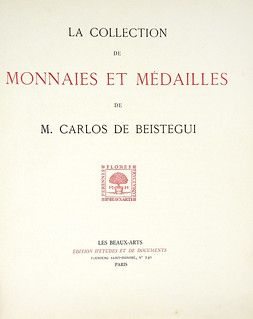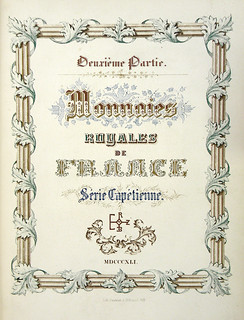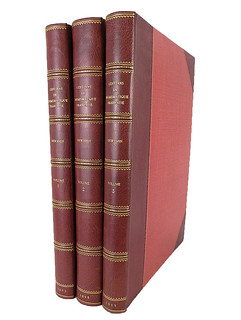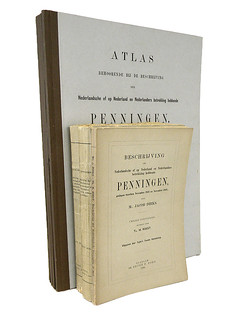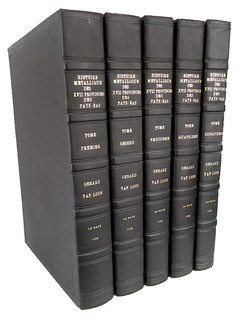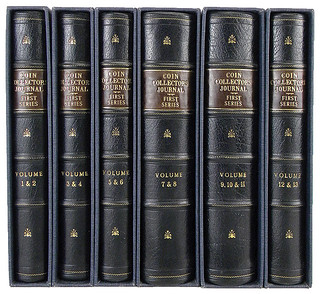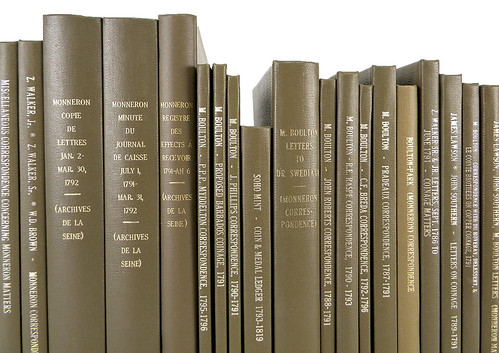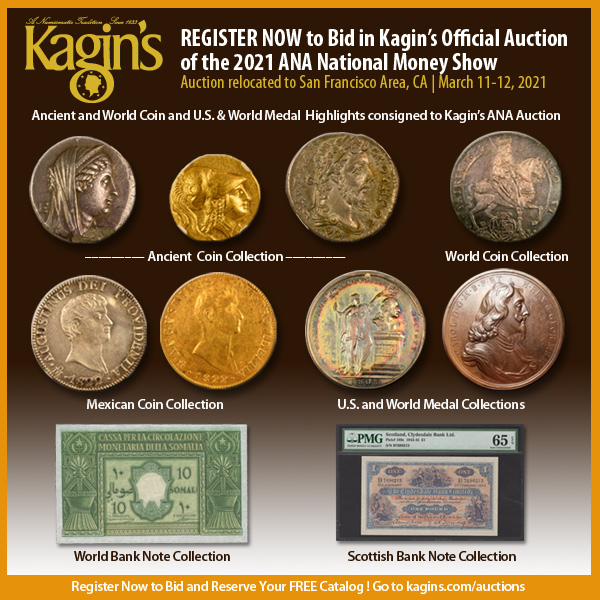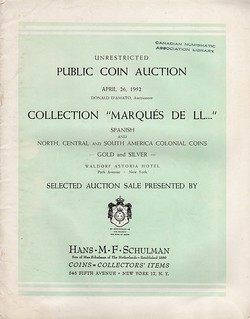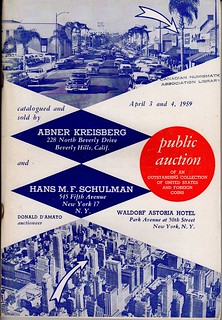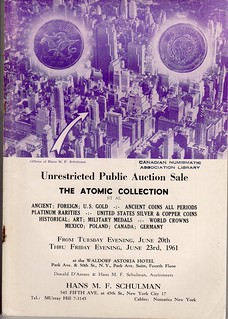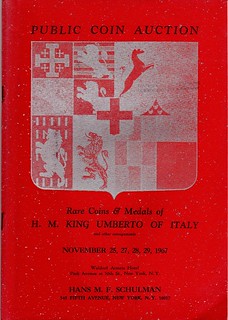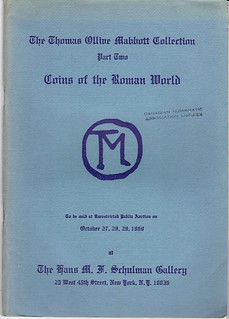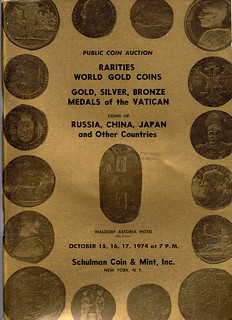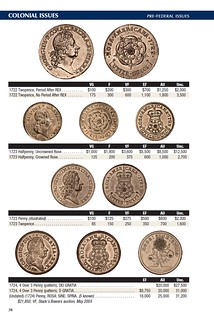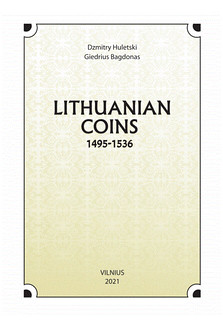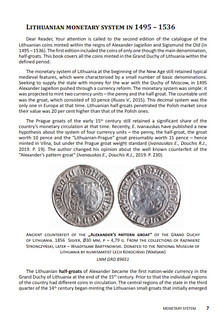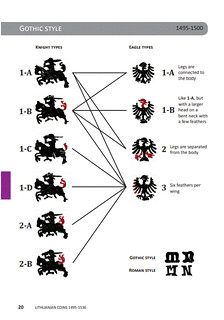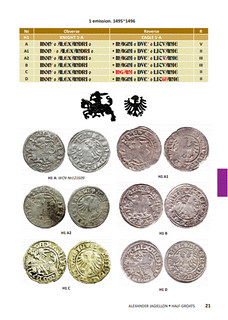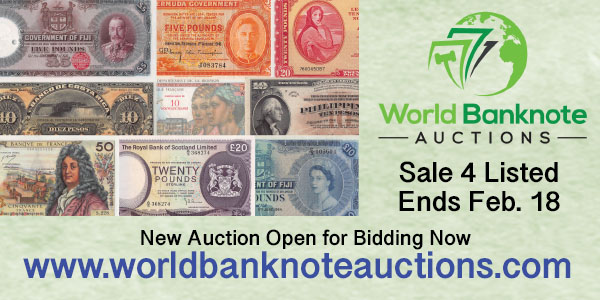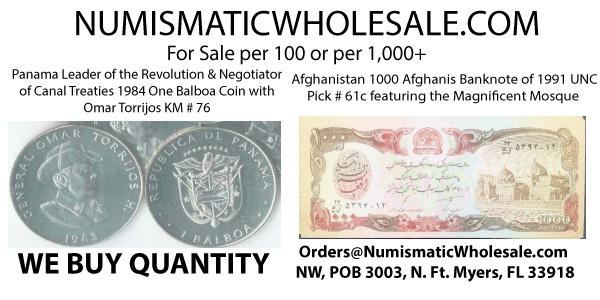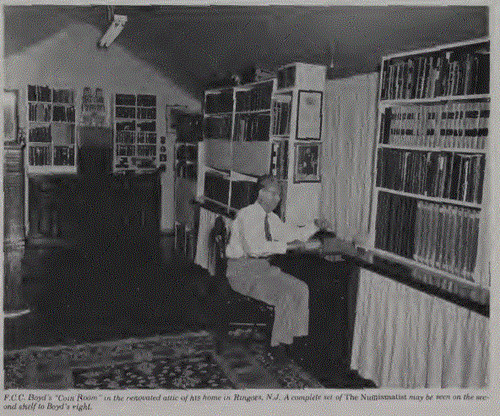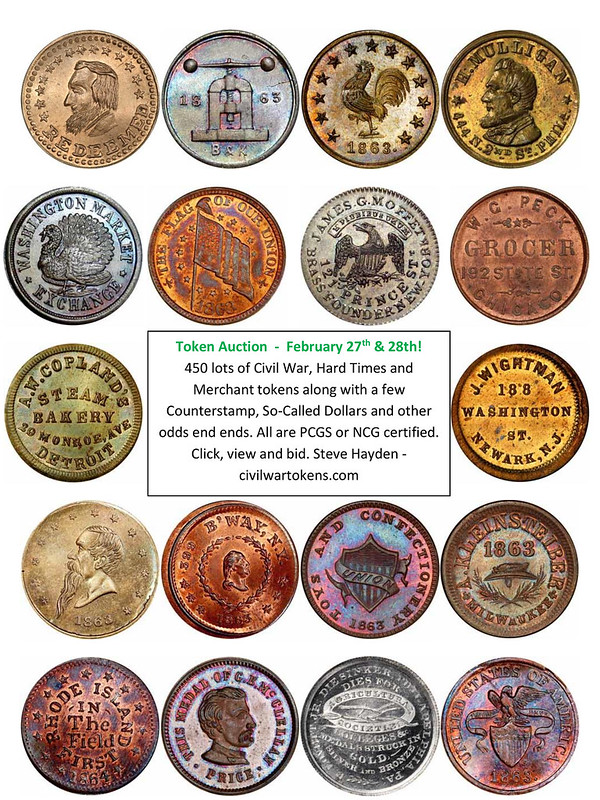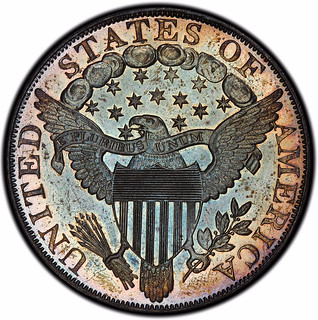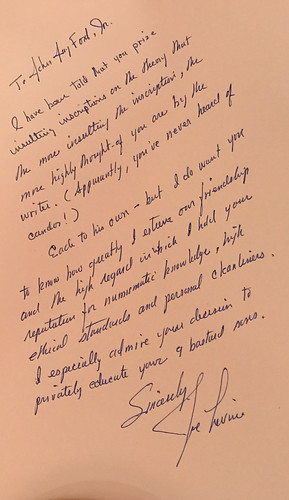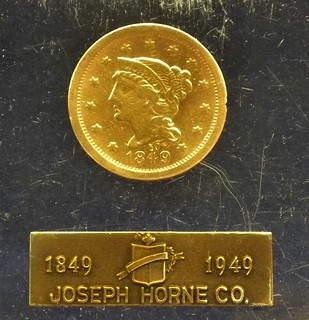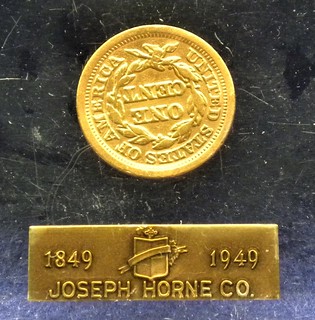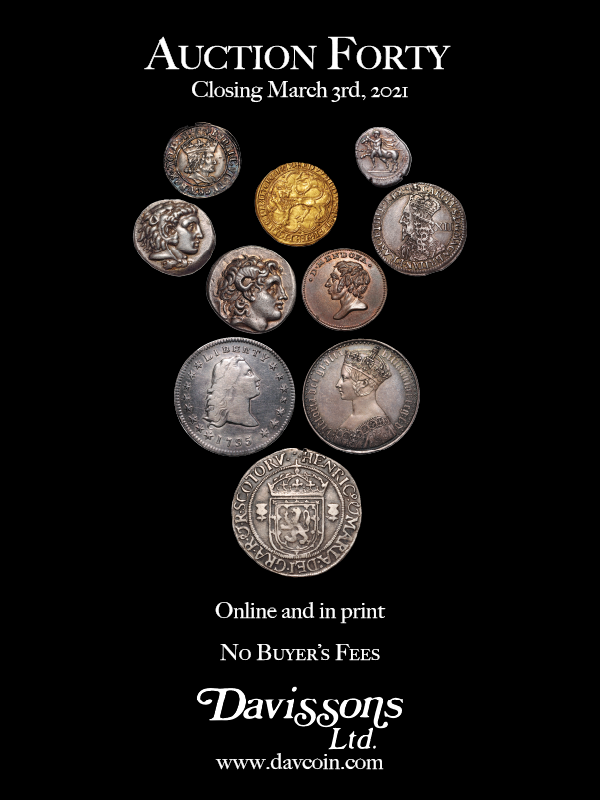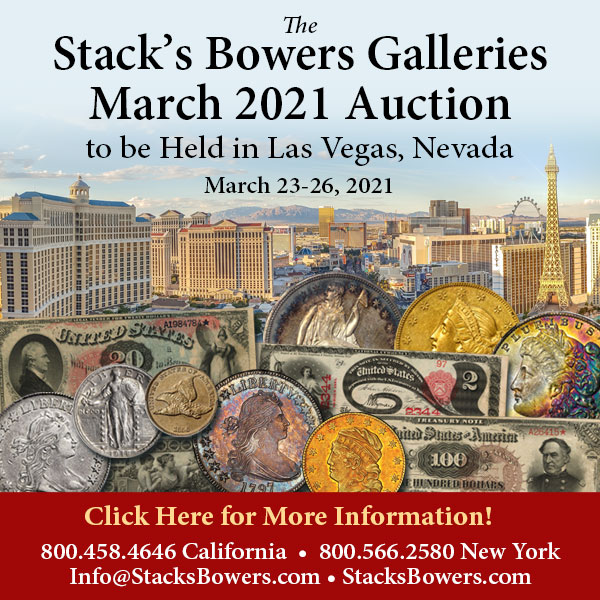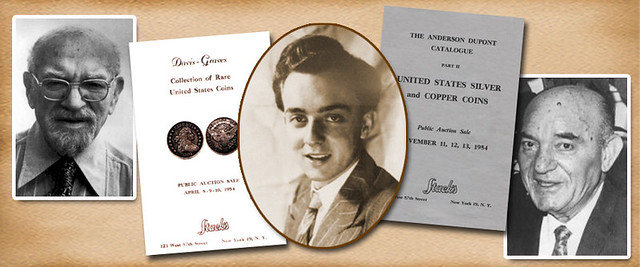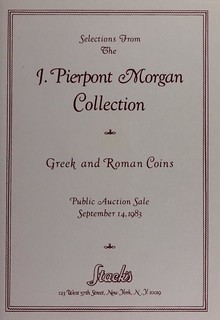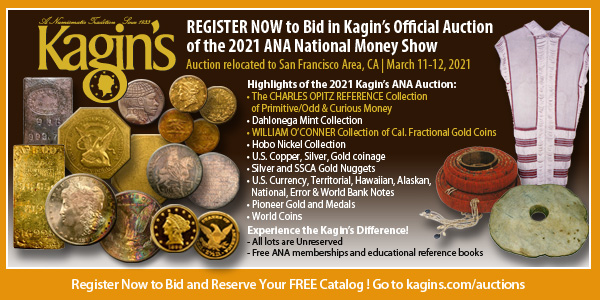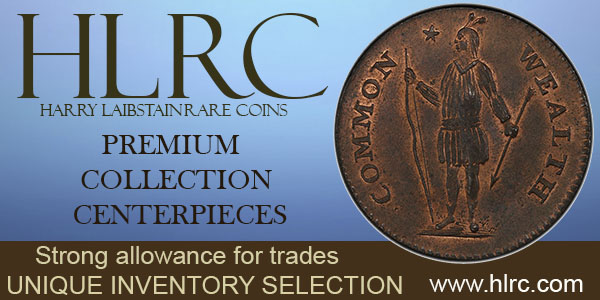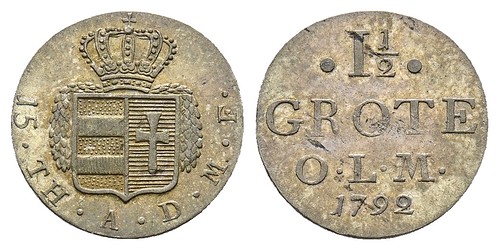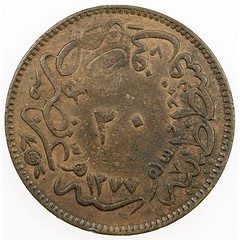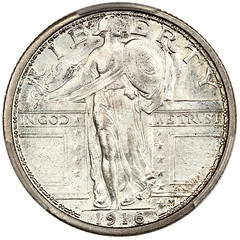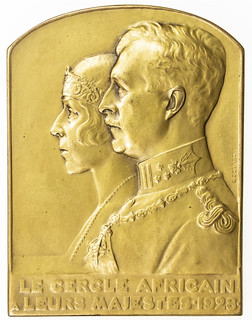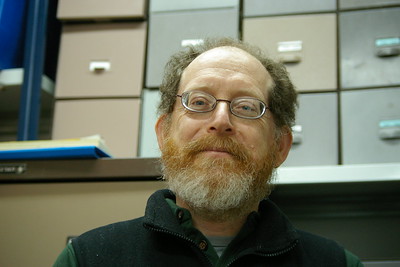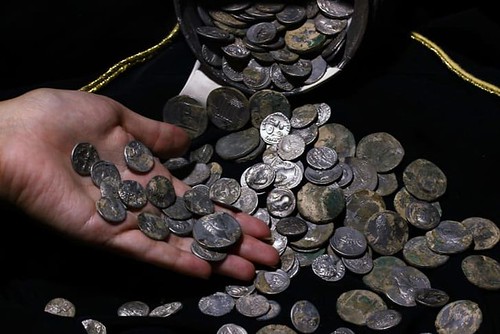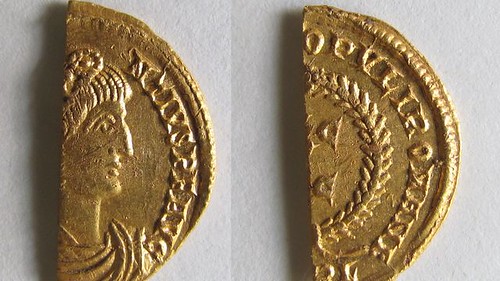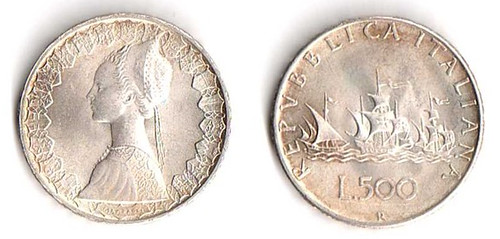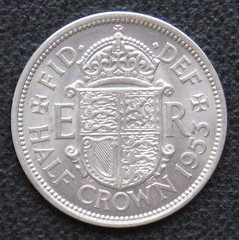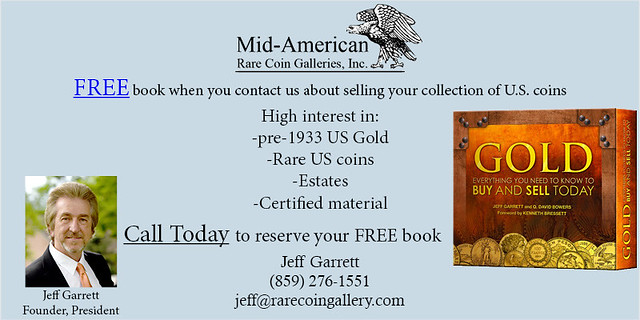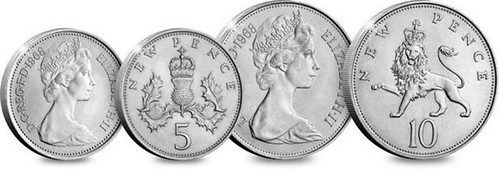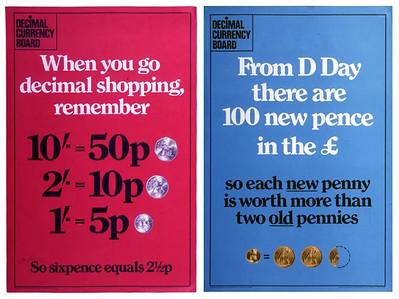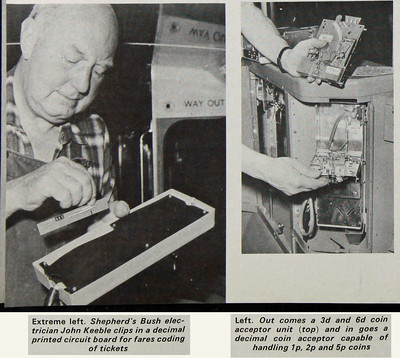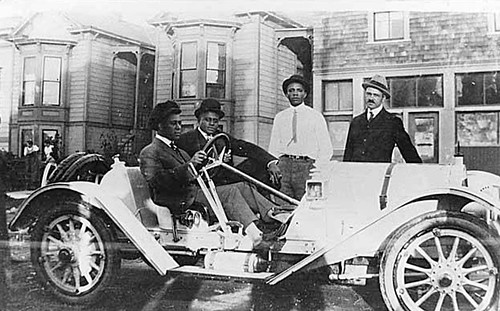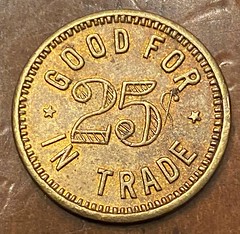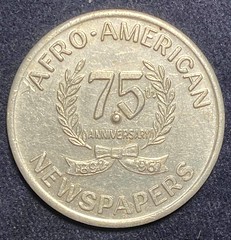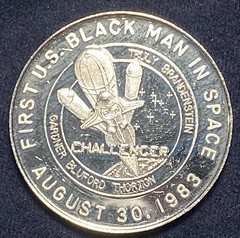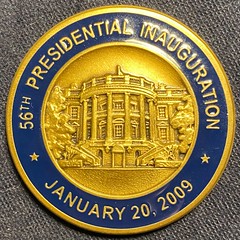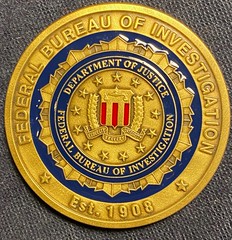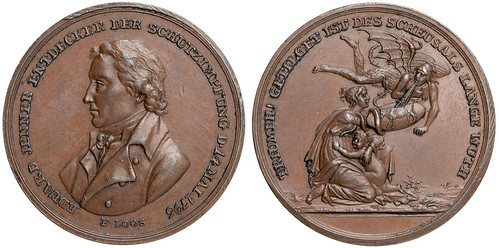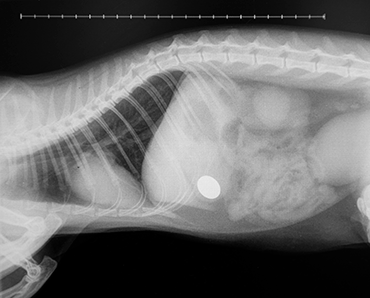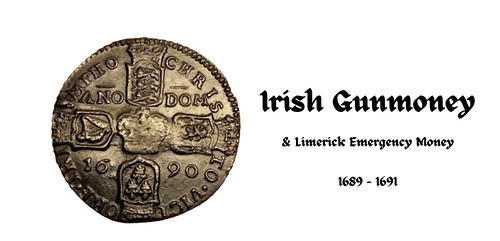
Visit our NBS Sponsors


About UsThe Numismatic Bibliomania Society is a non-profit association devoted to the study and enjoyment of numismatic literature. For more information please see our web site at coinbooks.org SubscriptionsThose wishing to become new E-Sylum subscribers (or wishing to Unsubscribe) can go to the following web page link MembershipThere is a membership application available on the web site Membership Application To join, print the application and return it with your check to the address printed on the application. Print/Digital membership is $40 to addresses in the U.S., and $60 elsewhere. A digital-only membership is available for $25. For those without web access, write to: Charles Heck, Treasurer AsylumFor Asylum mailing address changes and other membership questions, contact Chuck at this email address: treasurer@coinbooks.org SubmissionsTo submit items for publication in The E-Sylum, write to the Editor at this address: whomren@gmail.com BUY THE BOOK BEFORE THE COIN |
- WAYNE'S WORDS: THE E-SYLUM FEBRUARY 14, 2021
- KOLBE & FANNING MARGOLIS LIBRARY HIGHLIGHTS
- STOCKLEY BOOKS OFFERS SCHULMAN CATALOGS
- NEW BOOK: GUIDE BOOK OF U.S. COINS, 75TH EDITION
- NEW BOOK: LITHUANIAN COINS: 1495-1536, 2ND ED.
- NEW BOOK: RUS', LITHUANIA, HORDE. VOLUME 9
- NEW BOOK: EAST ASIAN COLLECTIONS IN SCOTLAND
- JOURNAL OF EAST ASIAN NUMISMATICS #21
- JEFFREY P. BERGELT
- NEWMAN PORTAL ADDS CONDER TOKEN JOURNALS
- VIDEO: HOUSTON MONEY SHOW DURING COVID
- LECTURE: ANCIENT COINS WITH PETER VAN ALFEN
- F.C.C. BOYD BIOGRAPHICAL DETAILS
- COLLECTOR'S MARKS AND THE DEXTER 1804 DOLLAR
- NOTES FROM E-SYLUM READERS: FEBRUARY 14, 2021
- DETROIT MAYOR'S MEDAL SOUGHT
- VOCABULARY TERM: CONGRESSIONAL MEDAL
- SAMUEL WINCHESTER CHUBBUCK (1799-1875)
- HARVEY STACK'S NUMISMATIC FAMILY, PART 89
- THE PLASTIC SLIDES OF WILLIAM GUILD
- NUMISMATIC NUGGETS: FEBRUARY 14, 2021
- COIN OF ROMAN EMPEROR ANTONIUS PIUS FOUND
- COINS OF AUGUSTUS ERA FOUND IN TURKEY
- HALF ROMAN GOLD SEMISSIS OF CONSTANTIUS II
- THE HENRY-THE-PRETENDER MARY STUART RYAL
- PIETRO GIAMPAOLI'S ITALY 500 LIRA COIN DESIGN
- FIFTIETH ANNIVERSARY OF DECIMAL DAY IN BRITAIN
- WHEN LONDON UNDERGROUND WENT DECIMAL
- THE NEW HARLEM OF SEATTLE TRADE TOKEN
- MEDAL OF SMALLPOX PIONEER EDWARD JENNER
- LOOSE CHANGE: FEBRUARY 14, 2021
- FEATURED WEB SITE: IRISH GUNMONEY
Click here to read the thin version on the web
Click here to subscribe
Click here to access the complete archive
To comment or submit articles, reply to whomren@gmail.com
Content presented in The E-Sylum is not necessarily researched or independently fact-checked, and views expressed do not necessarily represent those of the Numismatic Bibliomania Society.
WAYNE'S WORDS: THE E-SYLUM FEBRUARY 14, 2021
 New subscribers this week include:
David Goldsmith and Andrew Pappacoda, courtesy John and Nancy Wilson; Michael Fay, courtesy Steve Hatfield; Robert Page, courtesy Gary Oddie; Bruce Tyo, courtesy Nick Graver; James Phillips, and
Marcel Springorum. Welcome aboard! We now have 6,613 subscribers.
New subscribers this week include:
David Goldsmith and Andrew Pappacoda, courtesy John and Nancy Wilson; Michael Fay, courtesy Steve Hatfield; Robert Page, courtesy Gary Oddie; Bruce Tyo, courtesy Nick Graver; James Phillips, and
Marcel Springorum. Welcome aboard! We now have 6,613 subscribers.
Thank you for reading The E-Sylum. If you enjoy it, please send me the email addresses of friends you think may enjoy it as well and I'll send them a subscription. Contact me at whomren@gmail.com anytime regarding your subscription, or questions, comments or suggestions about our content.
This week we open with more highlights from the Richard Margolis numismatic library, a price list of Schulman catalogs, four new books, a periodical, updates from the Newman Numismatic Portal, and more.
Other topics this week include F.C.C. Boyd, S. W. Chubbuck, William Guild, the Dexter 1804 Dollar collector's mark, Congressional medals, coin finds, Henry the Pretender, Decimal Day, a smallpox medal, and Irish gunmoney.
To learn more about the Bank Mint at St. Petersburg, Diamond Anniversary edition of the Red Book, Lithuanian coinage, Conder tokens, Joe Levine, the J. Pierpont Morgan collection, Roman terracotta theater tokens, the Gregorian Tunnels, the gold half-semissis of Constantius II (not really), Russell "Noodles" Smith, and the great Super Bowl rings heist, read on. Have a great week, everyone!
Wayne Homren
Editor, The E-Sylum
KOLBE & FANNING MARGOLIS LIBRARY HIGHLIGHTS
Here are additional highlights from the March Kolbe & Fanning sale of the numismatic library of dealer Richard Margolis. -Editor
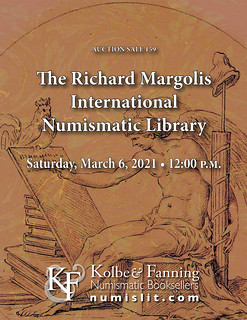 March 6 Margolis Library Sale Highlights
March 6 Margolis Library Sale Highlights
Kolbe & Fanning Numismatic Booksellers will be offering at auction highlights from the Richard E. Margolis Library of international numismatic literature on Saturday, March 6, 2021. The Margolis Library covers the coins, medals and paper money of all times and places, but is especially important for works on European and American coins of the late 18th and early 19th centuries. The 539-lot sale features books, auction catalogues and periodicals, as well as separate sections on numismatic art and archival materials.
Some highlights of the sale include:
Lot 2: the very rare catalogue of the Carlos de Beistegui collection, with 64 exceptional plate
Lot 73: a splendid set of Guillaume Conbrouse's 1839–1841 Catalogue raisonné des monnaies nationales de France
Lot 81: a finely bound set of Dewamin's classic three-volume folio, Cent ans de numismatique française, from the library of Phiroze K. Randeria
Lot 270: a complete set of Dirks on 19th-century Dutch medals
Lot 273: an original set of the 1732–1737 French edition of van Loon's Histoire métallique des XVII provinces des Pays-Bas...
Lot 324: a bound volume of early coin catalogues from the Rollin & Feuardent Library, including the very rare 1799 catalogue of the collection of Pierre-Antoine de Milly
Lot 454: the complete John G. Murdoch sales, conducted by Sotheby, Wilkinson & Hodge in 1903 and 1904
Lot 492: a beautifully bound complete set of J.W. Scott's Coin Collector's Journal, in full morocco with slipcases
Lot 516: the original hand-drawn, -lettered and -tinted architectural plan of the Bank Mint at St. Petersburg, depicted in Richard Doty's The Soho Mint & the Industrialization of Money
Lot 539: an extraordinary archive of papers on Matthew Boulton, the Soho Mint, and related topics, comprising forty-one bound volumes of photocopies of original materials located by Richard Margolis in public and private archives around the world, organized by him and frequently annotated.
Register early to bid online
Bids may be placed via post, email, fax or phone, as well as online. Kolbe & Fanning use Auction Mobility as our third-party online bidding platform. Auction Mobility is an app-based platform allowing users the ability to participate in the sale through phones, tablets and computers. To register for the sale, bidders must go to
bid.numislit.com and sign up. Once you have set up an account, you may browse lots, place advance bids, or participate in the live sale online. Those wishing to participate on their devices can download the new Kolbe & Fanning app through the Apple or Google Play Store. The sale is also listed on Biddr and NumisBids and absentee bids may be submitted through those platforms.
The printed catalogue of the Margolis Library has been mailed to all active customers on our mailing list. As international mail speeds have been slowed by the Corona situation, we encourage our international clients to consult the electronic catalogue in case their printed catalogue does not arrive promptly. A PDF of the printed catalogue has been posted to our main website at numislit.com for those who prefer that format. Bids placed via post, email, fax or phone must be received by March 5, the day before the sale, in order for them to be processed. Advance absentee bids may also be placed at any time online at bid.numislit.com. Live internet bidding will be available during the sale itself through the same platform.
Kolbe & Fanning Numismatic Booksellers LLC is a licensed and bonded auction firm in the State of Ohio. For more information, please see the Kolbe & Fanning website at numislit.com or email David Fanning at df@numislit.com. To register for the sale, go to bid.numislit.com. We look forward to your participation.
To read the earlier E-Sylum article, see:
KOLBE & FANNING RICHARD MARGOLIS LIBRARY SALE
(https://www.coinbooks.org/v24/esylum_v24n06a02.html)
STOCKLEY BOOKS OFFERS SCHULMAN CATALOGS
Howard R. Engel of Richard Stockley Books is offering a fixed price list of Schulman auction catalogs. -Editor
 In keeping with The E-Sylum's ongoing homage to the venerable Schulman numismatic legacy, Richard Stockley Books (RSB) offers an extensive selection of more than 50 Schulman auction catalogues (whether issued by Hans M. F. Schulman, Hans M.F. Schulman and Abner Kreisberg and Hans M. F. Schulman, The Hans M. F. Schulman Gallery or Schulman Coin & Mint, Inc.) One is from 1952, three are from 1959 and the rest are from the 1960's through 1974. They highlight the collections of such luminaries as Virgil Brand, Howard D. Gibbs and Thomas Ollive Mabbott. One from 1968 features an "Important Reference Library". If you happen to be looking for a catalogue of a specific collection sold by Schulman during this era, let me know; otherwise I'll simply send you the entire list that is in random order.
In keeping with The E-Sylum's ongoing homage to the venerable Schulman numismatic legacy, Richard Stockley Books (RSB) offers an extensive selection of more than 50 Schulman auction catalogues (whether issued by Hans M. F. Schulman, Hans M.F. Schulman and Abner Kreisberg and Hans M. F. Schulman, The Hans M. F. Schulman Gallery or Schulman Coin & Mint, Inc.) One is from 1952, three are from 1959 and the rest are from the 1960's through 1974. They highlight the collections of such luminaries as Virgil Brand, Howard D. Gibbs and Thomas Ollive Mabbott. One from 1968 features an "Important Reference Library". If you happen to be looking for a catalogue of a specific collection sold by Schulman during this era, let me know; otherwise I'll simply send you the entire list that is in random order.
Most are in very good to near fine condition, with minor defects such as bumps, creases, small tears or staple stains. Any major defects, which are very few and far between, are noted on the list. Most have a small stamp or two of "Canadian Numismatic Association Library" on the cover and/or title page. They are all priced at a relatively low $10 each by themselves, plus $5 each per supplement (i.e. a booklet of plates and/or prices realized list), plus shipping and handling. A total of only 7 of these catalogues have one or two supplements. Five of these have just one of these supplements and thus cost $15 ea., while 2 more have both supplements which make them $20 ea. Prices are in Canadian dollars for collectors based in Canada and in U.S. dollars for everyone else. If this offering piques your interest, please request the detailed list that is in Excel format from Howard R. Engel, Proprietor at richardstockleybooks@mymts.net. As usual, it's first come, first served so don't hesitate to let me know your interest sooner than later, to avoid disappointment.
THE BOOK BAZARRE
NEW BOOK: GUIDE BOOK OF U.S. COINS, 75TH EDITION
My, how time flies. The Red Book is celebrating 75 years of publication with its new Diamond Anniversary edition. Here's the announcement from Whitman. -Editor
The First Edition Was Written During World War II, and Published in 1946.
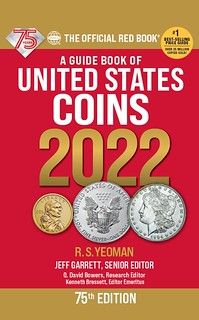 Whitman Publishing announces that the Diamond Anniversary 75th edition of the coin-collecting hobby's annual Guide Book of United States Coins (popularly known as the "Red Book") will debut April 6, 2021. The new volume includes completely updated prices and auction data reflecting the current market for collectible U.S. coins, along with historical information and guidance on how to build valuable collections. The Red Book can be pre-ordered online (including at
Whitman.com) in several formats, and after April 6 will be available from booksellers and hobby shops nationwide.
Whitman Publishing announces that the Diamond Anniversary 75th edition of the coin-collecting hobby's annual Guide Book of United States Coins (popularly known as the "Red Book") will debut April 6, 2021. The new volume includes completely updated prices and auction data reflecting the current market for collectible U.S. coins, along with historical information and guidance on how to build valuable collections. The Red Book can be pre-ordered online (including at
Whitman.com) in several formats, and after April 6 will be available from booksellers and hobby shops nationwide.
Coin collectors have used the Red Book to value their collections since the 1st edition was published in 1946. Today, Senior Editor Jeff Garrett coordinates the book's support network of more than 100 professional coin dealers and researchers. He credits the Red Book's 75 years of success to teamwork: "Whitman relies on a nationwide group of active retailers, auctioneers, historians, and other specialists with decades of experience. Thanks to their expertise we have the most current and accurate market information and recent scholarship for every coin series."
Research Editor Q. David Bowers has described the Red Book as a one-book library on American coins. "In a single convenient volume, you get photographs and details on every U.S. series from the 1790s to the current year's commemoratives and circulating coins," Bowers said. "The Red Book makes mintage data, coin designs, specifications, grading instructions, and market values easy to access and understand."
Editor Emeritus Kenneth Bressett has worked on the Red Book since 1959, and was the right-hand man to the book's author, R.S. Yeoman. "Every year the Red Book becomes more useful for coin collectors," Bressett said. "Generations of hobbyists have found it indispensable. We are delighted to note that in its 75th year, the Red Book has crossed the 25-million-copies threshold."
The 75th-edition Red Book is 464 pages long and prices nearly 8,000 entries in up to 9 grades each, with more than 32,000 retail valuations in total.
The book covers legal-tender United States coins from 1792 to date, from copper half cents to $20 gold double eagles, commemoratives, and bullion, plus earlier coins and tokens that circulated in colonial times. With every new edition the latest coins from the United States Mint are updated—Lincoln cents, Jefferson nickels, Roosevelt dimes, America the Beautiful quarters, Kennedy half dollars, Native American dollars, American Innovation dollars, commemorative coins, bullion coins, and government-packaged coin sets. The book also includes popular specialized collectibles such as error coins, Civil War tokens, Confederate coins, Philippine coins struck under U.S. sovereignty, private and territorial gold pieces, pattern coins, Hawaiian and Puerto Rican coinage, Alaska tokens, So-Called Dollars, and special modern gold coins.
These are illustrated by 2,000 photographs, including enlarged close-ups of rare and valuable die varieties.
Inside the 75th-edition Diamond Anniversary Red Book:
New commemorative coins. The 75th edition features coins from the Mint's two new commemorative programs for 2021. The National Law Enforcement Memorial and Museum program includes half dollars, silver dollars, and five-dollar gold coins. The Christa McAuliffe commemorative coin is a silver dollar.
Other new U.S. Mint coins and sets. The 75th-edition Red Book includes 96 new Mint products added since the 74th edition. Mintages of circulating coins have been updated across the board using government-supplied data and the latest numismatic research.
Collectors will also find complete coverage of the full range of American Eagle and other popular bullion coins and sets (in silver, gold, platinum, and palladium), with mintages and values for each.
Significant new coins this year include the "Washington Crossing the Delaware" quarter dollar, the 1921–2021 centennial "Morgan" and "Peace" dollars, and new reverse designs for the American Silver Eagle and American Gold Eagle.
A study of foreign coins that circulated in America. The Diamond Anniversary Red Book continues a section that debuted with the 70th edition: an overview of foreign coins that circulated as legal tender in the British North American colonies and in the United States until the late 1850s. This includes photographs, history, and pricing for collectible Spanish-American, Dutch, French, and English coins minted from the 1550s to the early 1800s, when Spain's American colonies won independence.
Recent research. Updates based on recent scholarship can be found in sections including pre-federal coins and tokens, and regular federal issues. Changes reflect research into the 1776-dated Continental Currency pieces; Flying Eagle cent mintages; 1974 aluminum Lincoln cents; and a newly listed doubled-die obverse two-cent piece.
Revamped commemorative coins and sets. The section on commemorative coins has been updated. It also has been extensively revised to group together all products (single coins and sets) for each coinage program. The specific contents of each government-issued commemorative set have been reviewed and confirmed or updated. And a new section, "Other Collectible Sets," includes special non-program sets like Coin and Chronicles Sets and Coin and Currency Sets.
The latest Mint data and information. Details of the upcoming Circulating Collectible Coin Redesign Act of 2020 have been spelled out. Every current coin program has been updated with available mintages. New coin listings include 42 standard Mint issues, Lincoln cents through American Innovation dollars; 12 commemorative issues; 33 bullion issues; the final America the Beautiful quarter (for the Tuskegee Airmen National Historic Site) and related five-ounce silver bullion issues; the latest Native American dollar; the American Innovation dollars for New Hampshire, Virginia, New York, and North Carolina; the Mint's first-ever colorized coins; two new commemorative programs; and the 2021 annual Proof and Mint sets.
New photographs. The Diamond Anniversary edition is updated with 78 new photographs, including many silver and gold coins from the 1700s and early 1800s; new close-ups of privy marks and lettering varieties; pattern coins; private and territorial gold pieces; and other colonial and modern coins.
Auction records. As in past years, collectors benefit from the Red Book's recent auction records provided for significant rare coins. Typeset throughout the charts are nearly 200 notable auction results. Combined with the listed retail prices, the auction data help advanced collectors understand the modern market for high-priced rarities.
In addition, the appendix of the "Top 250 U.S. Coin Prices Realized at Auction" has been fully updated. A record 118 auction sales were higher than $1 million each. The coin at #250, a 1795 Draped Bust silver dollar [BB-52], sold for $646,250—more than $28,000 higher than last year's coin in that ranking.
A bibliography for further research. In a positive measure of the health of the hobby and ongoing numismatic research, the Red Book's newly revised and updated bibliography includes more than two dozen standard references published over the past five years.
The cover of the spiral-bound Diamond Anniversary 75th-edition Red Book features three significant dollar coins: a Sacagawea golden dollar; an American Silver Eagle with the classic Heraldic Eagle reverse by John Mercanti; and a Morgan silver dollar. The hardcover Diamond Anniversary Red Book has silver-foil imprinting instead of the usual gold-foil, and its back cover features a silver-foil Diamond Anniversary emblem.
All versions and formats (hardcover; spiralbound hardcover; spiralbound softcover; and Large Print) of the 75th-edition Red Book will be available online, and at bookstores and hobby shops nationwide.
About the Guide Book of United States Coins
A Guide Book of United States Coins is the world's most popular annual retail price guide for U.S. coins, tokens, and other numismatic items. More than 25 million copies have been purchased since 1946, making it one of the best-selling nonfiction titles in the history of U.S. book publishing.
For the 75th edition, more than 100 professional coin dealers, scholars, and other numismatic experts contributed their knowledge under the direction of Senior Editor Jeff Garrett, Research Editor Q. David Bowers, and Editor Emeritus Kenneth Bressett.
The 75th edition of the Red Book is available online and at bookstores and hobby shops nationwide. Whitman Publishing offers a Large Print Edition and several formats of the regular edition (hardcover; spiralbound softcover; and spiralbound hardcover). Details about the forthcoming 1,504-page expanded Deluxe Edition, popularly known as MEGA RED™, will be available soon. For more information and to order, visit Whitman Publishing at www.Whitman.com.
A Guide Book of United States Coins, 75th Diamond Anniversary edition
464 pages
Full color
By R.S. Yeoman; senior editor Jeff Garrett; research editor Q. David Bowers; editor emeritus Kenneth Bressett.
$15.95 convenient lay-flat spiralbound
$17.95 classic red hardcover
$19.95 spiralbound hardcover
$29.95 Large Print Edition
$49.95 expanded Deluxe Edition (Mega Red) (1,504 pages)
NEW BOOK: LITHUANIAN COINS: 1495-1536, 2ND ED.
Dzmitry Huletski of the European Humanities University in Minsk published two new numismatic books in English early this year; both are on Lithuanian numismatics. The books are $45 each and they will be offered soon by Kolbe & Fanning Numismatic Booksellers LLC. -Editor
Dear Reader, Your attention is called to the second edition of the catalog of the Lithuanian coins minted within the reigns of Alexander Jagiellon and Sigismund the Old (1495 – 1536). The first edition included the coins of only one denomination, half-groats. This book covers all the coins minted in the Grand Duchy of Lithuania within the defined period. The book presents approximately twice as many coins as were published in the first edition.
To read a free preview, see:
Lithuanian Coins: 1495-1536 / (Free Access Sampler)
(https://www.academia.edu/45111691/Lithuanian_Coins_1495_1536_
Free_Access_Sampler_)
NEW BOOK: RUS', LITHUANIA, HORDE. VOLUME 9
The second volume published by Dzmitry Huletski is the ninth volume of the Rus', Lithuania, Horde: Journal of Numismatics and Sigillography. The book costs $45 and will be offered soon by Kolbe & Fanning Numismatic Booksellers LLC. -Editor
 Rus', Lithuania, Horde. Volume 9
Rus', Lithuania, Horde. Volume 9
The 9th volume of the research series "Rus', Lithuania, Horde" is a special volume devoted to the XVI International Numismatic Congress in Warsaw (2022). The volume contains publications and analysis of numismatic and sphragistic findings, as well as academic research and supplementary studies. The series is intended for historians, archeologists, numismatists, sigillographers, and other persons interested in heraldry, economics, and the law of the states of Eastern Europe in the Middle Ages.
Here is an excerpt from the volume's Foreword. -Editor
We are glad to draw your attention to the 9th volume of the research series "Rus', Lithuania, Horde", specially dedicated to the XVI International Numismatic Congress which is going be held in Warsaw (Poland) in September 2022. For the first time, our journal is published in English to make the works of numismatists and sigillographers of Eastern Europe widely available to the international research community.
The volume combines eleven works by thirteen authors representing scientific and public institutions in Russia, Belarus, Poland, Lithuania, Norway, Belgium, and the United States. It includes articles of different genres – academic studies by S. Goglov, A. Golemikhov, B. Paszkiewicz, a summarizing work by V. Lebedev, publications of previously unstudied material by A. Bohuš, P. Milejski, Dz. Huletski and R. Van Laere, overviews by Dz. Huletski, A. Petrov, S. Goglov, G. Titov, V. Zaytsev, popular science polemics by Ž. Maigys, and auxiliary research by A. Berglund. Some articles were specially written in English, some were translated from Russian, Polish, and Lithuanian. We tried to adhere to the terminology, onomastics, and bibliographic standards adopted by each of our authors, and not to make significant changes in their writing style, limiting ourselves only to general proofreading.
The subject of the articles covers numismatic and sphragistic studies from the early 10th to the early 17th century. The authors have done significant research work, a great layer of previously unknown and little-known material is introduced to the wide community. It would not be superfluous to say that our work began much earlier – 6 years ago, when the first volume of the series "Rus', Lithuania, Horde" was published in Minsk (Belarus). Over the years, our journal managed to become one of the largest scientific series on medieval numismatics and sigillography in Eastern Europe, publishing 166 articles in eight volumes written by 70 authors from different countries.
To read a free preview, see:
Rus', Lithuania, Horde. Volume 9: Free access sampler + Contents of the previous 8 volumes translated to English
(https://www.academia.edu/44771526/Rus_Lithuania_Horde_Volume_9
_Free_access_sampler_Contents_of_the_previous_8_volumes_translated_to_English)
NEW BOOK: EAST ASIAN COLLECTIONS IN SCOTLAND
In her Chinese Money Matters blog, Helen Wang, Curator of East Asian Money at the British Museum discussed a new review of East Asian Collections in Scotland. Here's an excerpt. -Editor
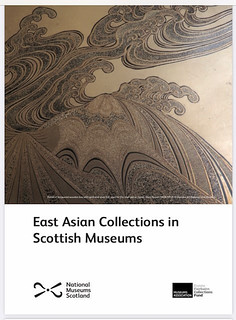 In 2017, as part of an Ancient Egypt and East Asia National Programme, National Museums of Scotland (NMS) began a review of East Asian collections in Scotland, supported by the Esmée Fairbairn Collections Fund, delivered by the Museums Association. The completed review East Asian Collections in Scotland (2020) covers 36 organisations, and highlights some of the objects and stories of these collections.
In 2017, as part of an Ancient Egypt and East Asia National Programme, National Museums of Scotland (NMS) began a review of East Asian collections in Scotland, supported by the Esmée Fairbairn Collections Fund, delivered by the Museums Association. The completed review East Asian Collections in Scotland (2020) covers 36 organisations, and highlights some of the objects and stories of these collections.
The survey covers three countries: China, Japan and Korea, and all types of objects, including numismatic material. The types of objects are: (1) Works on Paper/Silk/Pith, (2) Metalwork, (3) Cloisonné and Glass, (4) Ceramics, (5) Lacquer, (6) Carved Ivory/Stone/Wood, (7) Textiles, Dress/Embroidery, (8) Fibre/Bamboo/Wooden Structures, (9) Numismatics, (10) Photography, (11) Miscellany. The inclusion of a separate section devoted to numismatics is a very welcome development, the initiative of Dr Qin CAO, now a curator at the NMS, and previously a Future Curator in Asian Numismatics at the British Museum and the Manchester Museum.
NOTE: The review specifically covered East Asian collections in museums. There may also be numismatic collections in libraries: for example, the collection of Theophilus Siegfried Bayer (1694-1738) in the Special Collections and Archives of the University of Glasgow Library. Bayer was perhaps the first European to take Chinese numismatics seriously – see my earlier post about his collection. If you know of any other East Asian numismatic collections in Scotland, please leave a comment below.
To read the complete article, see:
79. EAST ASIAN MONEY AND MEDALS IN SCOTTISH COLLECTIONS
(https://chinesemoneymatters.wordpress.com/2021/02/08/79-east-asian-money-and-medals-in-scottish-collections/)
To read the review online, see:
Scotland's East Asia Collections
(https://www.nms.ac.uk/national-international/sharing-collections/national-projects/east-asia-collections/)
East Asian Collections in
Scottish Museums
(https://www.nms.ac.uk/media/1161839/east-asia-collections-in-scotland.pdf)
JOURNAL OF EAST ASIAN NUMISMATICS #21
The 21st issue of The Journal of East Asian Numismatics (JEAN) has been published. Publisher & Editor-in-Chief Michael Chou penned this Foreword to the issue. -Editor
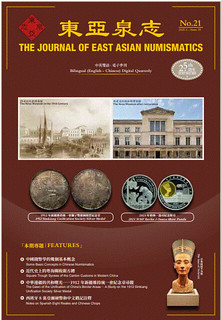 Welcome to the 21st issue of the journal.
Welcome to the 21st issue of the journal.
Our journal team will again work with leading numismatic author and editor Ron Guth on a book about the NC collection. The format will be similar to the 2015 Howard Franklin Bowker book, which was also edited by Ron Guth, Bruce Smith, and Michael Chou. Based on ten years of interviews with the owner of the NC collection, this book will give insight into one of the great collectors of Chinese numismatics and his family.
We have an article on the Smithsonian National Numismatic Collection's report on the digitization of 5,810 Chinese banknotes, which includes 4,500 notes from the collection of Alexander Pogrebetsky, in 1969 directed by Howard F. Bowker to NNC curators Vladimir and Elvira Clain Stefanelli, is extremely interesting.
Former Chinese Numismatic Museum curator Dai Zhiqiang's interesting article about Basic Concepts of Chinese Numismatics gives insight into this important topic.
Dr. Tseng Che-lu continues his analysis of coins from the fabulous collection of Chinese cash coins from the legendary Nai-chi Chang Collection with an article on the Yuan Dynasty Tien Chi Tung Pao 3 Cash Coins.
Stephan Dai continues his analysis of Chinese silver ingots in his article Silver Square Troughs of Canton.
There is an extremely interesting article by Cheng Bin on the background of the 1912 Sinking Unification Society medal.
Our editor Zhou Bian has an interesting article on ThreeHoled Spade which gives insight into these fabulous Chinese ancient spade rarities.
NGC's David Vagi continues his series on ancient coins in an article about the Four Aging Emperors. Spain's Salvador Ballesta's article about Spanish Eight Reals and Chinese Chopmarks gives insights into this interesting area of Chinese-Spanish numismatics. Our German correspondent Oliver Strah has submitted two reports about the World Money Fair panda.
Champion Auction will host its 25th anniversary auction in Macau in May 2021 at the Macau Sofitel Ponte 16 hotel. We will feature coins from the NC collection similar to the NC collection auction we held in Macau in 2015. Many excellent Chinese rarities and finest known coins will be in this NC auction, such as a 1916 Yuan Shi Kai flying dragon dollar with L. Giorgi signature, ex-Kann Collection, NGC MS64, extremely rare and finest known. Another highlights include 1912 Yuan Shi Kai large beard dollar in brass, ex-Kann Collection and possibly unique NGC UNC Details, 1911 Empire long whisker pattern dollar ex-Kann Collection and finest known.
To read the complete issue, see:
The Twenty-First Issue of JEAN
(https://issuu.com/jeandigitala1/docs/the_twenty-first_issue_of_jean)
JEFFREY P. BERGELT
Bob Steinberg passed along word of the passing of Fort Lee, NJ dealer Jeffrey P. Bergelt. -Editor
 Dear Colleagues---We are all mourning the loss of our friend and
colleague Jeff Bergelt who passed away February 5th.
Dear Colleagues---We are all mourning the loss of our friend and
colleague Jeff Bergelt who passed away February 5th.
If you would like to honor Jeff's memory--- please make a donation to the food bank in Jeff's area of New Jersey:
Center for Food Action
192 W. Demarest Ave
Englewood, NJ 07631
Send a check to them directly by mail--and on the memo line write:
In Memory of Jeffrey Bergelt
Their website is: www.cfanj.org You can donate on their website too!
Sorry to hear that news. An obituary is unavailable at this time. -Editor
Bob adds:
"He was 67. Everybody in our industry knew Jeff. He was just a really nice guy and a total straight shooter in business. Jeff was a regular on the show circuit, especially the Baltimore and Long Beach shows and the ANA show too, of course. He will be missed by all who knew him."
NEWMAN PORTAL ADDS CONDER TOKEN JOURNALS
The latest addition to the Newman Numismatic Portal is The "Conder" Token Collector's Journal. Project Coordinator Len Augsburger provided the following report. -Editor
Conder Token Journals on Newman Portal
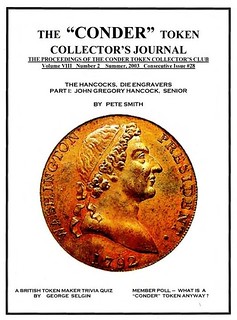 Conder Tokens, also known as 18th Century Provincial Tokens, are a form of privately minted token coinage struck and used during the latter part of the 18th Century and the early part of the 19th Century in England, Anglesey and Wales, Scotland, and Ireland. The Conder Token Collector's Club (CTCC), formed in 1996, serves as a central point for the research of these trade tokens. With the assistance of president Jeff Rock and the CTCC board, the "Conder" Token Collector's Journal has been posted on Newman Portal for the years 1996-2017. Note, an author and token index for issue nos. 1-70 (1996-2015), prepared by Dave Jones, is posted under the year 2015.
Conder Tokens, also known as 18th Century Provincial Tokens, are a form of privately minted token coinage struck and used during the latter part of the 18th Century and the early part of the 19th Century in England, Anglesey and Wales, Scotland, and Ireland. The Conder Token Collector's Club (CTCC), formed in 1996, serves as a central point for the research of these trade tokens. With the assistance of president Jeff Rock and the CTCC board, the "Conder" Token Collector's Journal has been posted on Newman Portal for the years 1996-2017. Note, an author and token index for issue nos. 1-70 (1996-2015), prepared by Dave Jones, is posted under the year 2015.
Link to the "Conder" Token Collector's Journal on Newman Portal:
https://nnp.wustl.edu/library/publisherdetail/527391
Link to the Conder Token Collector's Club home page:
http://ctcc.info/
VIDEO: HOUSTON MONEY SHOW DURING COVID
These are selections from the David Lisot Video Library that feature news and personalities from the world of coin collecting. David has been attending coin conventions since 1972 and began videotaping in 1985. The Newman Numismatic Portal now lists all David's videos on their website at:
https://nnp.wustl.edu/library/multimediadetail/522852
Here's one on the recent Greater Houston Coin Club show. -Editor
Greater Houston Coin Club Sponsors Houston Money Show During COVID Pandemic 2021.
VIDEO: 7:13.
Jack Domurat, Dealer Relations, Houston Money Show,
David Lisot, Interviewer, CoinTelevision.com. January 23, 2021.
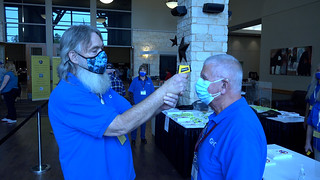 One of the first major coin conventions of 2021 was held in Conroe, Texas at the Houston Money Show sponsored by the Greater Houston Coin Club. Jack Domurat of the convention talks about the precautions taken to prevent COVID Virus and the reactions from the dealers and public. He shares about GHCC and why a person would want to belong to a coin club.
One of the first major coin conventions of 2021 was held in Conroe, Texas at the Houston Money Show sponsored by the Greater Houston Coin Club. Jack Domurat of the convention talks about the precautions taken to prevent COVID Virus and the reactions from the dealers and public. He shares about GHCC and why a person would want to belong to a coin club.
An excerpt of the video is available for viewing on the Coin Television YouTube Channel at:
https://youtu.be/yCcD-OdyJzc
LECTURE: ANCIENT COINS WITH PETER VAN ALFEN
Liz Benge of Art Institute Chicago writes:"I hope you have been well during these continuing bizarre and difficult times. The silver lining is all the free virtual events and I've watched several of the Money Talks and Long Table ones by the ANS. I'm even giving one of the Long Table talks at the end of this month! Feb. 26.
"In any case I wanted to share an event happening March 18 that E-Sylum readers might be interested in. It's a lecture on Ancient coins by Peter van Alfen and I'll give a short intro about the Art Institute coin collections too. Free but registration required."
Readers and Numismatic Bibliomania Society members may remember Liz as Elizabeth Hahn, who was appointed Librarian of the American Numismatic Society in 2008 and served as an NBS Board member from 2011-2013 and Vice-President from 2013-2017.
Here's the information on the virtual lecture. -Editor
Join Peter van Alfen, chief curator at the American Numismatic Society, for a discussion on the relationship between political power and coinage with Liz Hahn Benge, collection manager of arts of Africa and arts of the ancient Mediterranean and Byzantium.
The words and images that appear on the bills and coins we use today are clearly linked to the powers that issued them. Images of dead presidents and inscriptions like "United States of America" point to the authority of the federal government, and ancillary images, such as the Lincoln Memorial, serve to define our shared heritage as the nation of "We the People."
Using coin imagery, or types (in numismatic parlance), to convey these concepts is a practice as old as coinage itself; indeed we don't have to search far among Roman or Greek coins to find types expressly linked to the powers that issued them. It would seem a fair assumption, then, that coins served these purposes from the very beginning, explicitly linking money to political powers.
However, as van Alfen will illustrate, drawing on examples from the Art Institute's collection and beyond, this assumption is seriously challenged by the sheer number of coin types, and even nontypes, found among the earliest coins—those struck between approximately 650 and 500 BCE. This evidence defies easy explanation and instead pushes us to reconsider not only the function of early coin types but the easy relationship between these types and archaic political powers.
For more information, or to register, see:
Virtual Lecture: The J. William Holland Memorial Lecture—Ancient Coins with Peter van Alfen
(https://www.artic.edu/events/5137/virtual-lecture-the-j-william-holland-memorial-lectureancient-coins-with-peter-van-alfen)
F.C.C. BOYD BIOGRAPHICAL DETAILS
Julia Casey submitted these biographical notes on F.C.C. Boyd. Thanks! -Editor
F.C.C. Boyd Biographical Details
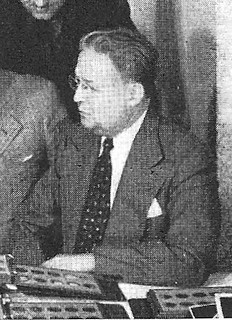 As a follow-up to John Lupia's entry from last week's E-Sylum on Frederick Charles Cogswell Boyd I would like to address certain biographical information.
As a follow-up to John Lupia's entry from last week's E-Sylum on Frederick Charles Cogswell Boyd I would like to address certain biographical information.
The entry on John's website indicates that no 1880 US Census record has been located for the Boyd family. I was able to find this record and it adds legitimacy to Boyd's statement that his mother was Arabella Sherwood Boyd. Arabella Boyd is shown as 31 years old and the wife of James Boyd (age 34) with children: Thomas S. (age 4), Lizzie F. (age 2) and Ada F. (age 3 months). F.C.C. Boyd would be born a few years later and consequently does not show on this census record.
Arabella Sherwood's identity as the mother of the Boyd children is also confirmed by the 1952 death certificate of F.C.C.'s sister Elizabeth Francis Boyd Porter ("Lizzie F." in the 1880 census), which lists her parents as James T. Boyd and Arabella Sherwood. Also 1915 marriage certificate of F.C.C's younger brother William, lists his parents as James Boyd and Arabella Sherwood.
In my opinion the 1900 census record for the Boyd family should be looked at with extra caution as to the veracity of the information as it appears the census taker made a number of minor errors. Having been employed as an enumerator for the 2020 census I can confirm firsthand that the census does make errors!
In regard to F.C.C. Boyd's son Cogswell Boyd, Lupia lists his name as "Cogswell Charles" while his obituary (Press and Sun Bulletin, Binghamton, NY, 4/15/2005) indicates his name as "Cogswell Coombes Boyd." This son was not the out of wedlock child of F.C.C. and Mary Helen Lynch, as detailed by John Lupia on his site, but the child of F.C.C.'s marriage to Maud Coombes Boyd (later St. John). F.C.C. and Maud G. Coombes were married on June 15, 1910 in New York City. Maud indicates her status as "divorced" when she married Harry Lamar St. John in Manhattan on 1/27/1925.
F.C.C. apparently married Mary Helen Lynch sometime between 1918 and 1925 (if the 1930 Census is accurate on this, it would have been about 1924/1925). Mrs. Helen L. Boyd of 33 Fifth Ave., New York, NY was admitted as a new member of the A.N.A. in December 1925 (#2937). The Boyds appear as a married couple in the 1925 New York State Census. Maud C Boyd was listed as F.C.C.'s wife on his 1918 WWI Draft Registration. The mentions of "Mrs. Boyd" in numismatic literature in the 1910s are likely to Maud C. Boyd.
On the Newman Numismatic Portal there is a scan of a 2011 email from Jerry Fochtman to Eric Newman asking if he had any information about F.C.C.'s divorce from Maud, later marriage to Helen Lynch or the death of Helen Lynch Boyd. I was able to locate an obituary for Helen in the Newark Star-Ledger, 10/30/1971 and both F.C.C. and Helen are buried in the Gate of Heaven Cemetery in East Hanover, N.J.
The photo is from the NNP Eric Newman - Boyd Correspondence file, see:
F.C.C. Boyd Correspondence, File 5, 1958-2003
(https://nnp.wustl.edu/library/book/527956)
To read the earlier E-Sylum article, see:
FREDERICK CHARLES COGSWELL BOYD (1884-1958)
(https://www.coinbooks.org/v24/esylum_v24n06a17.html)
COLLECTOR'S MARKS AND THE DEXTER 1804 DOLLAR
Steve Roach passed along this article about collector's marks on drawings that relates to last week's vocabulary phrase. Thanks! -Editor
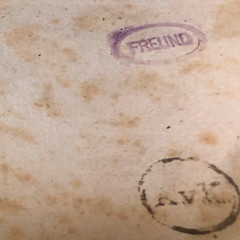 Collectors of Old Master prints and drawings often had hundreds or thousands of works on paper in their collections to keep track of at a time when inventories were painstakingly made by hand in ledger books. As part of this process, a stamp or seal was put on the back of each work of art to identify the owner, sometimes accompanied by a hand-written inventory number. Royal collections were inventoried and documented in the same way, often with a royal wax seal added to the collection number. These marks have been recorded over time and enable scholarly research into the history and provenance of important works on paper. In the absence of old inventory records or royal archives, collectors' marks can help identify a work of art and can add value if it is determined that the mark is that of a prestigious or royal collection, or from a prominent historic figure.
Collectors of Old Master prints and drawings often had hundreds or thousands of works on paper in their collections to keep track of at a time when inventories were painstakingly made by hand in ledger books. As part of this process, a stamp or seal was put on the back of each work of art to identify the owner, sometimes accompanied by a hand-written inventory number. Royal collections were inventoried and documented in the same way, often with a royal wax seal added to the collection number. These marks have been recorded over time and enable scholarly research into the history and provenance of important works on paper. In the absence of old inventory records or royal archives, collectors' marks can help identify a work of art and can add value if it is determined that the mark is that of a prestigious or royal collection, or from a prominent historic figure.
Dutch collector and connoisseur Frederick Johannes "Frits" Lugt (1884-1970) is the best-known and most thorough compiler of collectors' marks. In 1921, Lugt completed Les Marques de collections de dessins et d'estampes, an essential research tool for art historians and collectors.
To read the complete article, see:
Documenting History: Collectors' Marks, Stamps and Seals
(https://www.stairgalleries.com/news-insights/insights/collectorsmarks/)
I'm still interested in collector's marks on coins. So let's get this party started with that tiny "D" on the Dexter specimen of the 1804 dollar. Here's an excerpt from Mark Ferguson's 1804dollar.com site. -Editor
New Buyer Discovers Microscopic "D" Counterstamp!
The private buyer of the Dexter Dollar from the dealers who purchased the Charles M. Williams collection was Harold S. Bareford, a lawyer who became General Counsel for Warner Bros. Pictures. Bareford reportedly paid $10,000 for the rarity in 1949.
He held the dollar for many years, with Stack's auctioning the Bareford Collection in 1981. The catalog description for the Dexter Dollar included this important news:
"No description of the Dollar, however, would be complete without mentioning a most interesting detail that tells much about collector pride of ownership. Curiously enough the detail in question was first discovered by Harold Bareford himself and had never been noticed by any of the previous owners or dealers through whose hands the coin had passed. On the reverse a microscopic "D" has been lightly stamped into the second cloud from the right. It is now largely obscured by the coin's natural patina. For all practical purposes, the "D" is virtually invisible.
"When Mr. Bareford discovered this interesting countermark an inquiry was immediately undertaken. B. Max Mehl, still active, was able to confirm that neither he nor any of those familiar with the coin whom he had known personally had been aware of the mark, including William F. Dunham, whose collection Mehl had sold in 1941."
To read the complete article, see:
New Buyer Discovers Microscopic "D" Counterstamp!
(https://1804dollar.com/)
Here's a photo and cropped closeup. -Editor
To read the earlier E-Sylum article, see:
VOCABULARY TERM: COLLECTOR'S MARK
(https://www.coinbooks.org/v24/esylum_v24n06a16.html)
NOTES FROM E-SYLUM READERS: FEBRUARY 14, 2021
More on Joe Levine
Paul Montz writes:
"I never knew Joe Levine personally, although I do recognize seeing him at coin shows over the years. However, I had admired his catalogs of medals in recent years, as I became interested in that field, and hoped that he would again produce more auction catalogs. I am sorry to hear of his passing, as he clearly was a talent in the field."
Joel Orosz writes:
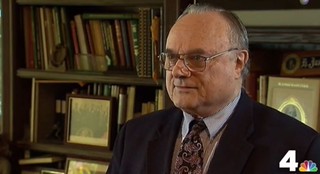 "Joe Levine will be justly remembered as one of the great dealers in, and scholars of, tokens and medals. It is also fitting that he be recalled for his wickedly quick wit, as exemplified in this inscription he wrote in John J. Ford's copy of Russell Rulau's revision of Lyman Low's Hard Times Tokens. Joe was one of four "Special Consultants" to Rulau in the 1980 revision of Low's classic book. There is no record of Ford's reaction, but he did carefully preserve the book in his library, suggesting that he appreciated Joe's humorous take-down."
"Joe Levine will be justly remembered as one of the great dealers in, and scholars of, tokens and medals. It is also fitting that he be recalled for his wickedly quick wit, as exemplified in this inscription he wrote in John J. Ford's copy of Russell Rulau's revision of Lyman Low's Hard Times Tokens. Joe was one of four "Special Consultants" to Rulau in the 1980 revision of Low's classic book. There is no record of Ford's reaction, but he did carefully preserve the book in his library, suggesting that he appreciated Joe's humorous take-down."
I have been told that you prize insulting inscriptions on the theory that the more insulting the inscription, the more highly thought of you are by the writer. (Apparently, you've never heard of candor!)
Each to his own - but I do want you to know how greatly I esteem our friendship and the high regard in which I hold your reputation for numismatic knowledge, high ethical standards and personal cleanliness.
I especially admire your decision to privately educate your 9 bastard sons.
Sincerely,
Joe Levine
Alan V Weinberg writes:
"Reading obituaries usually brings on thoughts of "so sad", "what a loss", and facial frowns or modest tears. Not so reading of Joe Levine's death and the numerous remembrances recorded by friends and associates. I smiled broadly and laughed as most focused in on Joe's personality attributes and his contributions to numismatics. This man will be missed."
Jeff Kelley writes:
"I only did business with Joe Levine a couple times but I was aware of his stature and respect in his field.
"In my most recent dealing with him a few years ago I purchased one of the Ohio Republican Party medals issued to mark the inauguration of Donald Trump. Since there was no official medal that year the state medal served as the quasi-official inaugural medal. "The medal's manufacturer used packaging that created a slight rub on a couple high points on the obverse, and when I pointed this out to Joe he shipped me a new medal and a check to cover the cost of returning the original medal. I ended up keeping both medals, returning his check, and sending him a few dollars to cover the cost of sending me the original box for the second medal. "His commitment to customer service was outstanding and quite contagious. "He was a true numismatist who contributed to the body of knowledge in his area of expertise. "Thanks, everyone. -Editor
To read the earlier E-Sylum article, see:
HENRY JOSEPH LEVINE (1940-2021)
(https://www.coinbooks.org/v24/esylum_v24n06a09.html)
Joseph Horne 1849 Cent in Lucite
Nick Graver writes:
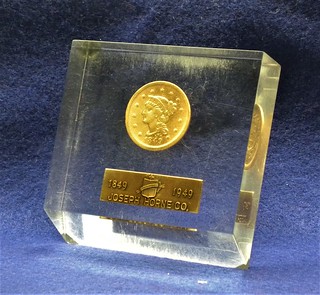 "Joseph Horne Co. was one of the oldest department stores in America, 1849 - 1994 when it merged with Lazarus. Since they kept to the western Pennsylvania region and did not expand all over the land, Hornes is not nationally remembered. But, in its day, it was one of the classiest department stores in the Pittsburgh area.
"Joseph Horne Co. was one of the oldest department stores in America, 1849 - 1994 when it merged with Lazarus. Since they kept to the western Pennsylvania region and did not expand all over the land, Hornes is not nationally remembered. But, in its day, it was one of the classiest department stores in the Pittsburgh area.
"For their centennial, they bought many 1849 one cent coins, had them cleaned till they almost looked like gold pieces, and then embedded with a plaque having the store name and founding date, 1849.
"The beveled edge gives it an interesting shape rather than just a rectangular block."
Cool item! I grew up in Pittsburgh and was in Horne's many a time. It was a great store. I wasn't aware of this neat numismatic souvenir. Shame about the cleaning, though. Photos by Bruce Tyo. Thanks! -Editor
To read an earlier E-Sylum article, see:
BANK OF NEW YORK FUGIO CENTS IN LUCITE
(https://www.coinbooks.org/v23/esylum_v23n07a16.html)
Annotated Théodore-Edme Mionnet Library Sale Sought
Hadrien Rambach writes:
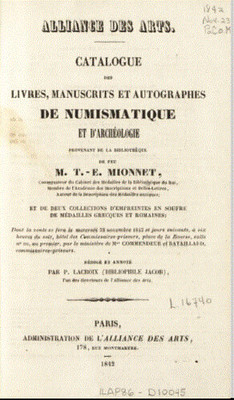 "Dear colleagues, I am researching
various lots that were part of the numismatic library of the French museum curator Théodore-Edme Mionnet (1770-1842).
"Dear colleagues, I am researching
various lots that were part of the numismatic library of the French museum curator Théodore-Edme Mionnet (1770-1842).
"The catalogue of 23 November 1842 (and following days) can be found online. Would anyone here have access to an annotated copy, as I would need to know the prices fetched by a dozen lots, and the buyers' names of a few ?
"I am also searching for a copy of the second catalogue, sale on 14 December 1842. Many thanks in advance for any suggestion! "
Can anyone help? -Editor
To read the catalogue online, see:
Catalogue des livres, manuscrits et autographes de numismatique et d'arche´ologie : provenant de la bibliothe`que de feu M. T.-E. Mionnet ... , et de deux collections d'empreintes en soufre de me´dailles grecques et romaines : dont la vente se fera le mercredi 23 novembre 1842 et jours suivants, a` six heures du soir, ho^tel des commissaires-priseurs ...
(https://archive.org/details/gri_cataloguedes00comm/page/n15/mode/2up)
New Book: Old Bones
Harry Waterson writes:
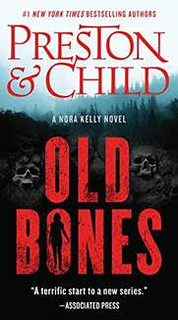 "For the numismatic MacGuffin list:
Old Bones by Douglas Preston & Lincoln Child, Grand Central Publishing, NY 2019.
It's a mystery set in the archeological excavation site of a ‘Lost Camp' of the Donner Party.
"For the numismatic MacGuffin list:
Old Bones by Douglas Preston & Lincoln Child, Grand Central Publishing, NY 2019.
It's a mystery set in the archeological excavation site of a ‘Lost Camp' of the Donner Party.
A MacGuffin is hidden at the site.
The MacGuffin is 1,000 1846 $10 Liberty Head gold coins in uncirculated condition or better. No mintmark is mentioned. In the mystery they are valued at $20,000,000 in the collector market. Surely a bit over the top. In true Hitchcockian fashion the MacGuffin has nothing to do with what is really going on at the Donner dig."
Thanks. It's always interesting to see how coins are depicted in fiction. -Editor
For background on MacGuffins and the Donner Party, see:
MacGuffin
(https://en.wikipedia.org/wiki/MacGuffin)
Donner Party
(https://en.wikipedia.org/wiki/Donner_Party)
Give Nothing, Get Nothing Token Die
Jeff Kelley writes:
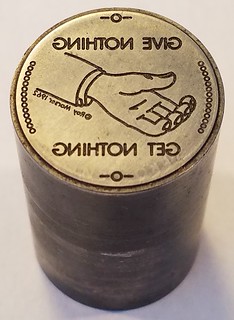 "I was interested to see the recent article on the "Give Nothing, Get Nothing" token from the early 1960s.
"I was interested to see the recent article on the "Give Nothing, Get Nothing" token from the early 1960s.
By coincidence, I recently obtained one of the dies used to strike the tokens.
I have also seen a vintage wooden nickel with a similar graphic and text on one side. (I have some on order but have not received them yet)."
Thanks! -Editor
To read the earlier E-Sylum article, see:
ZERO CENTS NO-TIP KOOKIE KOIN
(https://www.coinbooks.org/v24/esylum_v24n02a28.html)
DETROIT MAYOR'S MEDAL SOUGHT
Website visitor Kristofer Carlsson would like to obtain an example of the Detroit Mayor's medal discussed in 2011. Below is the earlier entry. Can anyone help? He can be reached at kristofer.carlsson@pixelize.se .
Also, does anyone have a copy of the price list? How much was the medal offered for? Thanks. -Editor
The following item caught my eye this week. It appeared in Joe Levine's Presidential Coin & Antique Company fixed price list #13... -Editor
DETROIT MAYOR'S MEDAL, 1963. 63.4mm. Bronze. Marshall Fredericks, Sc. (MACO). Uncirculated with some light discoloration on the reverse as shown. The obverse is a depiction of the seal of the city containing a representation of the Detroit fire in which the entire city burned with only one building saved from the flames. The figure of the left weeps over the destruction while the figure on the right gestures to the new city that will rise in its place. The two line Latin inscription at center reads: SPERAMVS RESVRGET/ MELIORA CINERIBVS ("We Hope For Better Things; It Shall Rise From the Ashes") The reverse is inscribed SPIRIT OF DETROIT above a replication of Frederick's statue of the same name; a 26 foot figure holding a globe which is one of the most recognized monuments in the city.
To read the earlier E-Sylum article, see:
THE DETROIT MAYOR'S MEDAL
(https://www.coinbooks.org/esylum_v14n50a13.html)
THE BOOK BAZARRE
VOCABULARY TERM: CONGRESSIONAL MEDAL
Here's another entry from Dick Johnson's Encyclopedia of Coin and Medal Terminology. -Editor
Congressional Medal. In America a medal authorized and enacted into law by the Congress of the United States. Usually these have been to honor specific individuals who have made some outstanding contribution to the country or humanity by military or naval valor, by lifesaving, or by their scientific, medical or other accomplishments. There is a large body of medals that are "Congressional medals" but not all mention Congress in the medal's inscription.
History of Congressional Medals. Because European nations had honored military heroes with medals, the Continental Congress sought to award gold and silver medals to American victors of both land and sea battles. The first of these went to George Washington – the Washington Before Boston Medal – and it, like five others in those early years, were struck in France at the Paris Mint. All other national medals of the United States since that time have been struck by the United States Mint at Philadelphia.
Thus Congress was the first to issue medals in America, a right it still upholds and practices infrequently 200 years later. Of all the medals listed in the book by Robert Julian, Medals of the United States Mint: the First Century, 1792-1892; half are authorized by Congress (290 of the 573 listed, the other half are private issues). Although most of these are issued automatically – medals of every President, Secretary of the Treasury, and Mint Director – Congress stipulates that these be issued by the Director of the Mint's discretion under Congressional authority.
After the Civil War Congress chose to honor military heroes with decorations, more so than with [table] medals. This was to allow military personal to wear their awards on their uniforms. For civilians, this was, of course unnecessary, and the customary form of medal was employed.
Congress chose to honor the heroes of the Revolutionary War, the War of 1812, the Mexican War of 1837, various battles, both at sea as well as on land. It honored Cornelius Vanderbilt, in 1862, for the donation of his private yacht to the government. In 1874 it honored John Horn for his efforts in saving lives in a ship sinking on the Detroit River. In the 20th century it honored the Wright Brothers and Charles Lindbergh for their aviation achievements; and it has awarded medals to such other Americans as medical researcher Jonas Salk and comedian Bob Hope.
The recipient of each of these medals receives the medal in gold. The policy of the government – and this is in harmony with the democratic concepts of America – that the same die that struck the gold medal can be further used to strike issues in bronze. Thus bronze medals are permitted to be sold to anyone who wishes to purchase them. Many are list medals, sold by Department of the Treasury.
Congressional medals should not be confused with the Congressional Medal of Honor, which is a decoration. It is intended to be worn with its neck ribbon. In contrast, Congressional medals are table medals, issued in a case or box. While American citizens are permitted to purchase bronze copies of any Congressional medal, no copies of the Congressional Medal of Honor are issued or allowed to nonrecipients.
References:
O37 {1977} Julian.
O19 {1969} United States Mint.
SAMUEL WINCHESTER CHUBBUCK (1799-1875)
Here's another entry from the online draft of John Lupia's book of numismatic biographies. Thanks! This is an excerpt with the full article and bibliography available online. This week's subject is collector S. W. Chubbock. I added an image from the Newman Numismatic Portal of Haseltine's February 28, 1873 sale of Chubbuck's collection. -Editor
Chubbuck, Samuel Winchester (1799-1875), Inventor, Silversmith and Metal Worker, Mechanic, and Numismatist.
He was born on December 24, 1799 in Weston, Vermont, the second of three children of Samuel and Cata Chubbuck. Early on he moved to Eaton, Madison County, New York. He then moved seven miles northwest to Morrisville, Madison County, New York, where from 1817 to 1819 he worked as a silversmith and goldsmith making jewelry. In 1823 at Morrisville he married Nancy Mary Gates (1804-1862). They had six children...
About 1844 he moved to Utica, New York into a residence in Whitesboro Street. He opened a shop at the foot of Genesee Street where he manufactured scientific instruments with a business partner Henry S. Storrs, in the firm of Storrs & Chubbuck. He immediately developed the prototype of the Morse telegraph transmitter in 1844. Sometime in 1860 he moved his shop to Hotel Street, just below the Post Office, and issued a trade token. In 1863 he issued a business script or advertising note valued at three cents postage at his store. (not in Vlack)
Around 1844 the New York and Buffalo Telegraph was scheduled to run lines into Utica, New York. Mr. Fargo and Hon. T. S. Faxton were the key citizens of Utica instrumental in the installation of the telegraphic lines. Chubbuck received four orders to manufacture telegraphic instruments at the behest of Morse who preferred Chubbuck's invention over his own. He made the first telegraphic instrument ever manufactured, and subsequently made thousands of them. He furnished all the instruments for the Washington and Baltimore telegraph lines, and most of the instruments for the Montreal Telegraph Company.
Although Chubbuck designed the prototype models of telegraphic instruments and made improvements on them he never filed any patent on them wishing them to be free for the public good. About 1865 his son Arinaldo S. Chubbuck purchased the telegraphic instruments department of his father's company. After turning over the telegraphic industry to his son he devoted his remaining years to developing other scientific instruments in the field of optics, mathematics, and the so-called philosophical field.
Numismatic Career :
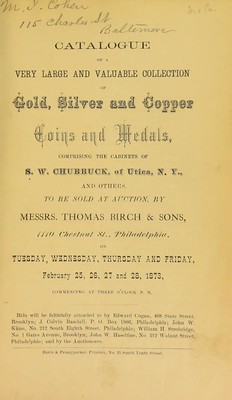 He purchased many pieces from Dr. J. E. Barratt, of Jefferson, New York, mentioned by Dr. C. E. Fraser, MD, of Rome, New York in the introduction to his coin auction catalog dated March 27, 1879, held at Bangs & Co.
He purchased many pieces from Dr. J. E. Barratt, of Jefferson, New York, mentioned by Dr. C. E. Fraser, MD, of Rome, New York in the introduction to his coin auction catalog dated March 27, 1879, held at Bangs & Co.
His first collection sale was of 348 lots sold through Thomas Birch & Co., on February 18, 1873. His second sale was conducted by John W. Haseltine, also at T. Birch & Son on February 25-28, 1873. The catalog features one plate with large cents 1793-1833. Only fifty plated catalogs were issued and they are considered a rarity.
He died of pneumonia on Monday, June 28, 1875. His son Arinaldo S. Chubbuck and Ezra P. Hodges were the executors of his estate.
To read the complete article, see:
CHUBBUCK, SAMUEL WINCHESTER
(http://www.numismaticmall.com/numismaticmall-com/chubbuck-samuel-winchester)
To read earlier E-Sylum articles, see:
NOTES FROM E-SYLUM READERS: MAY 19, 2013: Morse Code on S.W. Chubbuck Tokens
(https://www.coinbooks.org/esylum_v16n20a12.html)
MORE ON S. W. CHUBBUCK
(https://www.coinbooks.org/esylum_v16n21a11.html)
S. W. CHUBBUCK, NUMISMATIST
(https://www.coinbooks.org/esylum_v16n22a05.html)
HARVEY STACK'S NUMISMATIC FAMILY, PART 89
The latest article in Harvey Stack's blog series reviews the year 1983, including the J. Pierpont Morgan sale. -Editor
Stack's 1983 auction season continued with our March sale of ancient and world coins as well as a splendid general collection of United States gold, silver and copper coins. The sale contained over 1,300 lots and collectors participated in droves to find items on their want lists. The highlight was a group of U.S. silver dollars that featured 1836 and 1839 Gobrechts, 1851, 1852 and 1858 Liberty Seated pieces, and Carson City dollars from 1871, 1872 and 1873. The market was enthusiastic and we received a large number of mail bids as well as people participating in person.
In April Stack's had the honor of conducting the annual New York Numismatic Convention Sale, as had become customary for over two decades. In order to appeal to the many different collectors who participated, we presented ancient Judea coins, crowns and talers of the world, and United States coins from half cents to double eagles, as well as colonial coins. Included were additional pieces from the noteworthy Robison Collection, proceeds from which would once again be shared by Cornell University and Rensselaer Polytech. Our goal when presenting a sale, especially for a convention, was to offer "some coins for every class of collector" who might be attending the event. The 1983 convention sale contained over 1,500 exciting lots that attracted major interest.
Our June sale was similar in that again we offered numismatic items for many different collector interests, including United States colonial, copper, silver and gold coins as well as a splendid array of territorial coinage and an important group of U.S. currency. In total the sale presented 927 diverse lots of interest.
July again brought an Apostrophe Auction, which Stack's held in conjunction with Paramount, Superior and Rarcoa. As had become the tradition, each firm contributed 500 lots resulting in a sale of 2,000 lots split into four sessions. This summer event had become very popular and 1983 was no exception. The lots comprised United States type coins, rare dates and mintmarks, territorial issues and many other items, most of which were in Mint State or Gem Proof. As the "Apostrophe Auctions" reached their fifth year, they continued to provide an excellent venue where four of the leading dealers in America could attract hundreds of bidders, many of whom planned their summer holidays in order to attend.
September featured two catalogs, one of which presented a small but superb group of ancient Greek and Roman coins from the J. Pierpont Morgan Collection. Although there were only 101 lots, the quality and rarity of the pieces attracted dealers and collectors from all parts of the United States and the world. That Stack's was awarded this museum collection was a great honor, and our staff of experts prepared a very special catalog for the event.
After the J. Pierpont Morgan sale we presented another special catalog, with the outstanding collection of Dr. George J. Oviedo, Jr., featuring one of the most complete and high quality groups of United States half dollars to be offered for many years. It rivaled in quality some of our previous offerings of the series, as it contained coins from the collections of Dr. E. Yale Clark, Reed Hawn and James A. Stack, all which had been sold previously in Stack's auctions. Though not complete, it included 1794, 1795 3 leaf, five different varieties of 1795, both varieties of 1796, 1797, 1801, 1802, and a number of varieties to 1807. Highlights in the Capped Bust series were a superb 1815, an 1818/17 specimen Proof, and a Proof 1836 Lettered Edge, plus a substantial number of dates and varieties from 1807 to 1839-O. Also offered was one the legendary 1838-O, a world-class rarity. While not complete, the balance of the half dollar series from 1840 to 1947 was represented by many superb and Condition Census examples of various dates and mints, in outstanding Mint State and Brilliant Proofs.
In addition this sale brought to market rare and choice type coins in all metals, rich in early dates and mintmarks. It was an exciting start to the Stack's fall season of public auctions.
To read the complete article, see:
Harvey Stack Remembers: Growing up in a Numismatic Family, Part 89
(https://www.stacksbowers.com/News/Pages/Blogs.aspx?ArticleID=harvey-stack-remembers-part-89)
To read the 1983 Stack's catalogs on the Newman Numismatic Portal, see:
https://nnp.wustl.edu/library/auctioncompanydetail/3?Year=1983&displayAmt=50
To read the earlier E-Sylum article, see:
HARVEY STACK'S NUMISMATIC FAMILY, PART 89
(https://www.coinbooks.org/v24/esylum_v24n05a15.html)
THE PLASTIC SLIDES OF WILLIAM GUILD
In the ANS Pocket Change blog February 2, 2021, Jesse Kraft discusses an interesting and unusual method of sharing coin images. -Editor
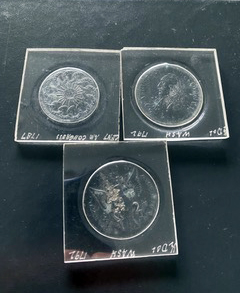 Every so often, something truly unique enters the American Numismatic Society's collection. Thanks to a generous donation by Vicken Yegparian, Vice President of Numismatics for Stack's Bowers Galleries, this took place once again. On the eve of this past Thanksgiving, Vicken reached out to see if the ANS had interest in receiving more than 2,000 plastic slides of various coins. While the basic description may not seem very appealing, both the physical slides and the coins they portrayed proved extremely interesting and quite important.
Every so often, something truly unique enters the American Numismatic Society's collection. Thanks to a generous donation by Vicken Yegparian, Vice President of Numismatics for Stack's Bowers Galleries, this took place once again. On the eve of this past Thanksgiving, Vicken reached out to see if the ANS had interest in receiving more than 2,000 plastic slides of various coins. While the basic description may not seem very appealing, both the physical slides and the coins they portrayed proved extremely interesting and quite important.
On the morning of January 7, I entered my office to find two rather large boxes on my desk. They each contained nine (9) double-row red boxes for storing coins in 2" × 2" holders—for a total of 18 boxes! After opening some, it was quickly apparent that the slides were not commercially manufactured. They were produced in the late 1940s by William Guild, of West Newton, Massachusetts, a real estate agent and relatively-unknown coin collector.
The slides are made of polymethyl methacrylate (PMMA), also known as lucite or by its trademarked name of Plexiglas. They are 2" × 2" with a thickness of roughly one-eighth of an inch. They are all completely transparent, except the depiction of the coin. After Guild pressed a coin into the heated lucite, the exact details transposed over in a translucent white, very similar in appearance to a soft cameo. The slides were made by pressing real coins into hot plastic for an exact replication of the design. Since the plastic was clear, a positive image was visible by simply looking through the other side, despite the fact that the initial impression technically created a negative. Most of the coins were from the United States, though included some foreign and ancient coins as well. The most-heavily represented of any single type, however, were of United States pattern coins—a specialty of Guild.
 Guild was apparently an early mentor and collaborator of Walter Breen. It is believed that Guild and Breen co-authored United States Pattern Coins, Experimental, and Trial Pieces, despite the fact that the name of J. Hewitt Judd, M.D. graced the cover. Judd, it is now thought, was more of a financier for the project rather than a contributor of information. As such, the Guild collection of patterns (forever memorialized in these slides) played an important role in the completion of the project.
Guild was apparently an early mentor and collaborator of Walter Breen. It is believed that Guild and Breen co-authored United States Pattern Coins, Experimental, and Trial Pieces, despite the fact that the name of J. Hewitt Judd, M.D. graced the cover. Judd, it is now thought, was more of a financier for the project rather than a contributor of information. As such, the Guild collection of patterns (forever memorialized in these slides) played an important role in the completion of the project.
In addition to the slides of coins, the donation came with some supporting materials. These included a few pieces of correspondence between Guild and some local clubs, such as the Thursday Club of Brookline, which used some of Guild's slides for presentation purposes in 1949. Perhaps the best piece of supporting material is Guild's personal copy of The Coin Recorder—essentially a checklist. This contained many details into both Guild's personal coin collection, as well as the production of the lucite slides.
Excitedly, I began to dive further into the production of these slides—both historically and physically. With minor research into the ANS archives, it became quickly apparent that Guild had a history with the Society, with most of his communications having occurred in 1947 and 1948—just when it was thought he produced the slides. To my surprise, I found that one of the very first individuals that Guild shared his slides with was none other than ANS Curator, Sydney P. Noe (1885–1969), who not only offered advice on how to perfect the slides, but also loaned coins from the ANS collection to Guild for this purpose!
As I unpacked more and more from the archives, it became clear that a much larger study is needed about William Guild, his plastic slides, and the role that the ANS played in their creation. Until then, please review the following list provided by Vicken, which breaks down the collection into major categories. If you have any interest in knowing what specific coins are represented in any of the groups, please do reach out to curatorial@numismatics.org. And do keep an eye out for any future publications on this fascinating collection. Thank you, again, Vicken!
To read the complete article, see:
THE PLASTIC SLIDES OF WILLIAM GUILD
(http://numismatics.org/pocketchange/guild/)
NUMISMATIC NUGGETS: FEBRUARY 14, 2021
Here's a selection of interesting or unusual items I came across in the marketplace this week. Tell us what you think of some of these. -Editor
Roman Terracotta Theater Token
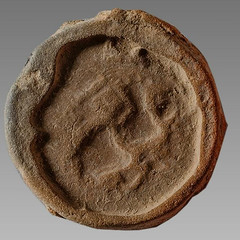
Roman Terracotta Theater Token with Deers c.2nd cent AD. Size 25 mm. Roman Alexandria Egypt circular shape theater token depicting two deers running (worn out). Provenance: Ex Eldert Bontekoe, Pegasi. Ann Arbor Michigan, USA.
I can't say I was ever familiar with Roman theater tokens. This was once in the stock of dealer Eldert Bontekoe. -Editor
To read the complete lot description, see:
Roman Terracotta Theater Token with Deers c.2nd cent
(https://www.liveauctioneers.com/item/98032434_roman-terracotta-theater-token-with-deers-c2nd-cent)
1792 Peter Friedrich Ludwig 1 1/2 Grote
Peter Friedrich Ludwig, 1785-1829, until 1823 as administrator for Peter Friedrich Wilhelm. 1 1/2 Grote 1792, Altona. 1.06 g. Kalvelage / Trippler 374.
Rare, especially in this condition. Excellent
Copy of the auction Westfälische Auktionsgesellschaft 38, Dortmund 2006, No. 315.
To read the complete lot description, see:
Peter Friedrich Ludwig, 1785-1829, bis 1823 als Administrator für Pet
(https://www.kuenker.de/en/elive-auction/stueck/289193)
Countermarked Turkey 20 Para
COUNTERMARKED COINS: TURKEY: AE 20 para, ND, Wilski-AT-03, incuse countermark tughra of Abdul Hamid II in circle, on obverse of 20 para AH1277 year 4, EF on handsome F host, ex Hans Wilski Collection (pictured in table).
There are some interesting countermarked coins in the current Stephen Album Rare Coins internet auction. -Editor
To read the complete lot description, see:
COUNTERMARKED COINS: TURKEY: AE 20 para, ND. EF
(https://www.sarc.auction/COUNTERMARKED-COINS-TURKEY-AE-20-para-ND-EF_i40059682)
1916 Standing Liberty Quarter
Famous and popular key date SLQ. The 1916 is highly sought by all collectors of key date coinage as a low mintage first-year issue. Full head examples are especially tough this superb gem features bold, full detail throughout. Silky, clean surfaces are devoid of any distracting marks and displays subtle blended rose and gold tones. An exceptional specimen, PCGS has graded less than 10 examples finer!
To read the complete lot description, see:
1916 Standing Liberty 25c PCGS MS66 FH
(https://www.davidlawrence.com/rare-coin/2231575)
Albert I Belgian Congo Visit Plaque
BELGIAN CONGO: Albert I, 1909-1934, AE plaque (174.8g), 1928, Vancraenbroeck-97, Willenz-319, 78x59mm gilt bronze medal with rounded top for the Royal Visit to the Congo and the Opening of the Port Franqui to Elisabethville Railway by Godefroid Devreese, conjoined busts of Albert and Elisabeth left, with he in uniform // train passes statue in African landscape, "J.FONSON 384" on edge, Choice About Unc.
To read the complete lot description, see:
BELGIAN CONGO: Albert I, 1909-1934, AE plaque (174.8g), 1928. AU
(https://www.sarc.auction/BELGIAN-CONGO-Albert-I-1909-1934-AE-plaque-174-8g-1928-AU_i40059769)
Italy Gregorian Tunnels Medal
ITALY. Papal States. Tivoli. Gregorian Tunnels/Aniene River Diversion bronze Medal. Issued 1835. Commemorating the massive earthworks project (75mm, 165.77 g, 12h). By H. Lorenz.
To read the complete item description, see:
Home / Inventory / 101457 | ITALY. Papal States. Tivoli. Gregorian Tunnels bronze Medal.
(https://www.numismagram.com/product-page/101457)
COIN OF ROMAN EMPEROR ANTONIUS PIUS FOUND
Howard Berlin passed along this article from The Times of Israel about the chance find of a soldier. Thanks. -Editor
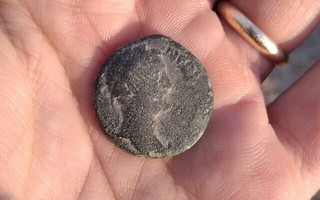 An Israel Defense Forces soldier discovered a rare 1,800-year-old coin during a training exercise, the Israel Antiquities Authority announced on Monday.
An Israel Defense Forces soldier discovered a rare 1,800-year-old coin during a training exercise, the Israel Antiquities Authority announced on Monday.
The coin features an image of the head of the Roman emperor Antonius Pius and was dated to 158–159 CE.
Donald Tzvi Ariel, head of the Israel Antiquities Authority's Numismatics Department, said that the coin was well-preserved and a rare find.
"This coin joins only eleven such coins from known locations in the National Treasures Department collection. All the coins were found in northern Israel, from Megiddo and Zippori to Tiberias and Arbel," Ariel said.
On its reverse was the Syrian god MEN, the moon god, and the phrase "of the people of Geva Phillipi."
The Israel Antiquities Authority said the coin was minted in Geva and was discovered in northern Israel, without giving further specifics of the location of the find.
Howard adds:
"Here's a photo of Dr. Donald Ariel who I first met in his office at the Israel Museum in Jerusalem."
To read the complete article, see:
IDF soldier finds rare 1,800-year-old coin during training exercise in north
(https://www.timesofisrael.com/idf-soldier-finds-rare-1800-year-old-coin-during-training-exercise-in-north/)
 Thanks also to Arthur Shippee, who forwarded a related article from
The Jerusalem Post. It has an image of the coin's reverse.
-Editor
Thanks also to Arthur Shippee, who forwarded a related article from
The Jerusalem Post. It has an image of the coin's reverse.
-Editor
To read the complete article, see:
1800-year-old coin found by soldier offers look at ancient life in Israel
(https://www.jpost.com/archaeology/1800-year-old-coin-found-by-soldier-offers-look-at-ancient-life-in-israel-658327)
COINS OF AUGUSTUS ERA FOUND IN TURKEY
Arthur Shippee also found this article on a nice find of over 650 silver Roman coins in Turkey. Thanks! great photos. -Editor
Details of a "very special" haul of 651 Roman coins found in the ancient city of Aizanoi in Turkey have been released by researchers behind the discovery.
The silver coins were found in a jug during archeological excavations led by researchers from Pamukkale University, according to a press release from the university.
The ruins of Aizanoi are found in modern day Kutahya province, western Turkey.
The coins were found in 2019 and date from the period of Emperor Augustus, who ruled from 44 BC to 14 AD.
He was the first Roman emperor, who took over from Julius Caesar and built an empire that would eventually stretch from the UK to Egypt, boasting on his death bed that, "I found Rome built of bricks, and left it marble."
Many of the coins feature Augustus' face, while others bear the likenesses of Marcus Junius Brutus -- one of the ringleaders in the assassination of Caesar in 44 BC -- and some show Caesar himself.
Elif Ozer, head archeologist and professor at the university, said the coins were "a very special and unique collection" which may have been brought to Aizanoi by a high-ranking soldier.
The majority of the coins appear to have been minted in southern Italy, the press release, published earlier this month, said.
"It is the most special silver coin find of recent times," added Ozer.
To read the complete article, see:
More than 650 silver Roman coins found in a jug in Turkey
(https://www.cnn.com/style/article/turkey-roman-coins-scli-intl-scn/index.html)
HALF ROMAN GOLD SEMISSIS OF CONSTANTIUS II
Here's an unusual find - half a Roman gold coin. Found via The Explorator newsletter. To subscribe to Explorator, send a blank email message to: explorator+subscribe@groups.io. -Editor
The discovery of half a gold Roman coin found in Norfolk has been declared as treasure.
The coin was found by Brett Du Cesari on land belonging to Henry Burn on October 13 2018 by a metal detector.
A report to the court described the item as a cut half of a gold semissis of Constantius II, a Roman emperor who ruled between 337 and 361 AD.
The coin had been deliberately cut across the centre with the report suggesting the half coin served as either a friendship token or for a ritual function.
Ms Blake said: "It is not certain why coins were cut in this way."
To read the complete article, see:
Half Roman coin declared as treasure
(https://www.edp24.co.uk/news/norfolk-half-roman-coin-find-declared-treasure-7315900)
THE HENRY-THE-PRETENDER MARY STUART RYAL
In a February 5th email to clients, Allan Davisson discussed an interesting Henry-the-Pretender Mary Stuart Ryal - lot 185 in their current Auction 40. Here's an excerpt. -Editor
It was an ill-advised marriage—Mary Stuart and Henry Lord Darnley. As the son of Margaret Douglas, granddaughter of Henry VII, Darnley was in the line of succession for the English throne, as was Mary Stuart whose grandmother was a sister of Henry VIII. With Elizabeth on the throne with no children, the Stuarts had strong claim to succeed her—and eventually did with Mary Stuart's son, James I.
Lady Margaret Douglas, a daughter of Henry VII and wife of Matthew Stuart, the 4th Earl of Lennox, sent her son to Scotland hoping that he would marry the other—and more favorably born—candidate for the throne—Mary Stuart.
Love did not blossom until Darnley fell ill with measles, and in the process of nursing him back to health the 23 year old Mary Stuart fell in love with the 19 year old Darnley. They married despite the disapproval of Elizabeth I, the English Privy Council and most of Mary's Scottish advisors. The two were married in July 1565, and Darnley soon began to push for promotion from King Consort to King of Scots.
The numismatic note of this marriage is understandably brief. At the time of the marriage a 30 shilling ryal was issued showing facing busts of Henry and Mary (Spink 5424. Burns Plate LXV:903B. SCBI 58:1165A). This particular coin issue was "rapidly withdrawn, no doubt because of the clear implication they carried that Darnley's status was to be seen as equal to that of the queen." (Holmes, SCBI 58, p 8 citing a 1565 letter).
The ryal shown here with Henry's name preceding Mary's was minted using a genuine reverse die, probably in 1566. Whether the piece was created as a lark, as a proposed pattern or as a misguided but genuine effort at declaring himself king (Roman emperor aspirants used coins as declarations), it fits with the Darnley push for power at that time. The minters used a worn reverse die (Burns II: p. 340: 5. Fig 905) and a concocted obverse die. Though the name of John Acheson, master moneyer from 1588 to 1582, is mentioned as part of a later irregular coin issue (Murray. 1987) there is apparently no record of whether he was involved, how the reverse die was accessed or how the HENRICVS obverse die was created. However, Holmes (2006) notes that he "is currently of the opinion that they (this issue) may result from unauthorized activity at the mint."
A search of sales records and a survey of numismatic literature shows no examples being offered at auction of this issue other than the Lockett piece and the Davisson 2015 piece. These three pieces remain the only examples we have been able to trace. Beyond the references cited below, a numismatic literature review utilizing the exhaustive 1997 publication by Harrington Manville, Numismatic Guide to British & Irish Periodicals 1836-1995 and the 1993 Cumulative Index to Spink's Numismatic Circular Volumes 1 to 100 revealed no additional research or background on this intriguing artifact from a volatile era of Scottish history.
For more information on the sale, see:
https://davcoin.com/
To read the earlier E-Sylum article, see:
DAVISSONS ANNOUNCES AUCTION 40
(https://www.coinbooks.org/v24/esylum_v24n05a18.html)
PIETRO GIAMPAOLI'S ITALY 500 LIRA COIN DESIGN
David Pickup submitted this Valentine's Day story about the Italian 500 Lira coin design. Thanks. -Editor
Feeling Romantic? A coin for Valentine's
This is a beautiful coin. It is not rare but the designs are exceptional. The obverse was designed by an artist called Pietro Giampaoli and shows a young woman in Renaissance dress, surrounded by 19 shields. From lower left the shields are: Genova, Torino, Aosta, Milano, Trento, Venezia, Trieste, Udine, Bologna, Firenze, Ancona, Perugia, Roma, L'Aquila, Napoli, Bari, Potenza, Catanzaro, Sicilia, Cagliari. The last two are hidden behind the bust. The designers' name is below the portrait.
The coin has raised edge letter within six stars REPVBBLICA ITALIANA ***[date]*** The reverse has Christopher Columbus's ships, the Nina, Pinta and Santa Maria sailing to right, the denomination L. 500 and letter R for the mint The designer of the reverse was Guido Veroi. Born in 1926 in Rome ; died January 16, 2013 there ) was an Italian sculptor , medallist. The coins were issued from late 1958 to 1967 and then in specimen sets.
There is a story that the obverse design was not intended to be for a coin but a present for a lady. Another account says it was a wedding anniversary gift and a medallion with the design won first prize at 1951 International Numismatics Exposition in Madrid. Just the thing for a Valentine's Day gift!
Sources:
File:IT-1958-Lire-500.jpg
(https://commons.wikimedia.org/w/index.php?curid=12563589)
Story behind the 500 Lire coin design?
(https://www.cointalk.com/threads/story-behind-the-500-lire-coin-design.69049/)
Numista › Coins › Italy › Italy
500 Lire
(https://en.numista.com/catalogue/pieces2716.html)
FIFTIETH ANNIVERSARY OF DECIMAL DAY IN BRITAIN
David Pickup submitted this piece on tomorrow's anniversary of decimalisation. Thanks! -Editor
All change- Decimalisation Anniversary
15 February 2021 is the fiftieth anniversary of Decimal Day in Britain when the new currency system was formally introduced. It was not universally popular as the great British public preferred counting from one to twelve rather stopping at ten. It is arguably simpler to do maths in multiples of twelve rather than ten.
The process of introducing the new coins had started some years before with the introduction of the 5 and 10 pence coins in 1968. Decimalisation led to nostalgia about the loss of well-loved coins such as the penny, florin and halfcrown, which had nicknames and years of history. There was always a feeling amongst a certain generation that pre decimal coins had a value that modern coins do not. Getting sixpence or threepence pocket money, handling bright shiny pennies or been given a halfcrown by a well off uncle all meant something. If you had a florin or halfcrown in your pocket you had a lot of money or at least you thought that.
Decimalisation brought inflation and this led to the reduction in size of coins and further withdrawal of favourite denominations. The phrase "new pee" did not sound right and many people thought the designs were bland.
In the 1960s and 1970s it was possible to find coins from the reigns of George V and Edward VII and even from the reign of Victoria. In the run up to decimalisation the Royal Mint issued older coins into circulation. Many coin collectors bewailed the loss of history and there was a short lived "check your change" enthusiasm for rare dates on pre decimal coins. Some of those people went on to become collectors.
Shops had posters with conversion charts and "ready reckoner" booklets were available to buy. These were sometimes ignored. I remember being short changed. I was due three old pence change and given a new penny. Fortunately I got over it… eventually, although if I ever go near that shop again...
A publicity campaign took place in the weeks before Decimal Day, including a song by the singer and entertainer, Max Bygraves called "Decimalisation". Here is part of a verse,
"Gone are the days when twelve old pence added up to make a shilling, not much sense. The half crown too has gone for good - a coin that foreigners never understood,"
Here is a link to the song on YouTube https://www.youtube.com/watch?v=jCiEzQ4EGk4
There was also a record brought out by the actor Wilfred Brambell https://www.youtube.com/watch?v=oCLVtuvZ71k
The BBC broadcast a series of five minute programmes, titled "Decimal Five", to which a pop group called The Scaffold contributed some songs. Things did improve in following years with introduction of innovative designs such as the twenty pence, the twelve sided pound coin, the shield design of Matthew Dent in 2008 and the wide range of commemorative 50p and two pound coins.
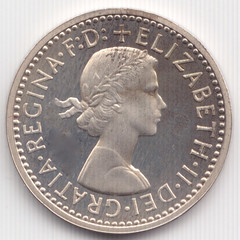 Mary Gillick's marvellous pre decimal portrait of the Queen is still used on Maundy coins.
Mary Gillick's marvellous pre decimal portrait of the Queen is still used on Maundy coins.
For more information, see:
File:1953 half crown reverse.jpg
(https://commons.wikimedia.org/w/index.php?curid=3211696)
File:Maundy obverse.jpeg
(https://commons.wikimedia.org/w/index.php?curid=12256736)
WHEN LONDON UNDERGROUND WENT DECIMAL
Here's another article on how the London Underground switched to the new decimal coins. Found via News & Notes from the Society of Paper Money Collectors (Volume VI, Number 34, February 9, 2021). -Editor
The move to decimalisation in the UK started 200 years ago, in 1821 when a Parliamentary Committee was set up, although it eventually rejected the proposals. Various attempts were made to change the currency, but it was a report published in 1963 that set the stage for the UK to change its currency at last.
The plans for decimalisation would see the pound retained, as it was a global reserve currency at the time, but the shilling was to be abolished, and the pound subdivided into 100 "new pence" – each worth 2.4 old pence.
The penny was nearly called the cent, but that was dropped as it sounded too foreign to British consumers. It did mean the oddity of having old pence (d) being replaced with new pence (p).
Although there was a fixed deadline of 15th February 1971 for Decimal Day, in fact, the two currencies ran alongside each other for a couple of years. The new 5p and 10p coins were introduced in April 1968 to replace the shilling and florin coins, followed by the 50p coin in October 1969, replacing the 10 shilling banknote.
For many years, the 5p and 10p coins circulated with New Pence written on them, which doesn't happen any more.
For a couple of years, shops showed two prices, in old currency and the new decimal currency to help people get used to the new system before it became mandatory.
To help, if that's the right phrase, Max Bygraves released a song promoting decimalisation, which inexplicably was not a success in the pop music charts. Meanwhile, the government started its own massive education campaign with posters, booklets, and films.
Naturally, London Underground had to prepare as well for what it described in its staff magazine as "the massive problems the changeover will raise".
A number of articles appeared in the staff magazines in the two years leading up to the currency swap, explaining how it was all going to work. The changeover wasn't just a case of training staff across the entire of the London Transport network but also upgrading all the coin counting and ticket machines in the tube stations, and the handheld ticket machines used on buses. As with the shops, the tickets also had to be dual-currency for a couple of years, so they all needed to be changed — twice.
As reported in the London Transport Magazine, there were also worries about the new 50p coin, as although it was designed to work with coin counting machines, it later turned out that none of the existing coin-counting machines could in fact handle it.
In addition, once a coin acceptor unit was developed to fit into their ticket existing machines, they then needed to be fitted to the machines – a laborious manual process for every single machine in London Transport. The works were carried out by London Transport's ticket machine works based in Brixton. This was also where some 10,000 Gibson bus ticket machines were refitted to issue tickets in the new currency.
It cost £80,000 to convert the coin machines on the London Underground to decimal.
There was also the staff training to consider so that they weren't as confused as customers during the transition. A number of training centres were set up in offices around London, and even mobile training centres in ten specially converted Routemaster buses.
During the final six months leading to D-Day, 22,000 cash handling staff at London Transport attended catch-up training classes.
In the few remaining months to the switchover, 750,000 posters were printed to warn people who might somehow still be unaware that all their money was changing, that it was about to do so. Also, 1,500,000 leaflets were sent to schools to educate schoolchildren about the new fares and coinage.
To read the complete article, see:
50 years since London Underground switched to decimal currency
(https://www.ianvisits.co.uk/blog/2021/02/09/50-years-since-london-underground-switched-to-decimal-currency/)
THE NEW HARLEM OF SEATTLE TRADE TOKEN
Here's another one of John Kraljevich's Black History Month articles on Facebook. This one highlights a fascinating Seattle entrepreneur. -Editor
According to the 1920 census, there were just 2,894 African-Americans in Seattle. They were just 1% of the city's population.
It's a fair bet that they all knew Russell "Noodles" Smith.
Noodles was the guy with the Stutz Bearcat, which he sometimes like to drive down to San Diego to vacation.
Noodles was the guy that went back and forth between Portland and Seattle scouting real estate investments.
Noodles was the guy that owned just about every club within sight of 12th and Jackson in the heart of Seattle, and Noodles was the guy that could get you into a card game or put a drink in your hand, Prohibition be damned. Noodles was the guy.
When Smith opened the Alhambra Club in 1922, it was the third nightclub in his empire. The Alhambra became the Black and Tan Club ten years later.
After Prohibition ended, the scene changed. The alcohol was no longer the attraction it used to be — everyone had it. In March 1934, Noodles opened The New Harlem Club away from his Jackson Street base of operations. The new space, closer to downtown at 1916 1/2 Fourth Avenue, was intended to be just what its name suggested: a space evocative of Harlem, with all the class and ritziness that suggested. It was only open two months, when the ultimate irony struck: after thriving through 13 years of Prohibition, Noodles' new project was closed by issues with its liquor license. The 25-cent token depicted below is from his short lived project. The space continued to be a club, though. Nirvana played there in 1989.
Noodles opened one more club in 1937, the similarly upscale Ubangi Club, which frequently featured the best acts from Los Angeles flown in for their shows. It even sponsored a semipro football team composed of moonlighting baseball stars from the Negro League Seattle American Giants. After 1940, he slowed down, focused on philanthropy and got out of the active management of his clubs. He died in 1952, but his clubs endured. Ray Charles first played the Black and Tan in 1948, at the start of two years in Seattle. Charlie Parker did too, and Quincy Jones transitioned from boy phenom to grown-up player on its stage.
Noodles got his nickname from saying that however much he staked in a craps game, he always saved enough to buy a bowl of noodles at the end of the night. Though his speakeasy jazz empire at 12th and Jackson is gone now, a man who welcomed Black, Asian, and white women and men into his clubs from the very start might be amused to see what's on his old block now. It's the heart of Seattle's Little Saigon.
To read the complete article, see:
Black History Month, 2021. Day 10.
(https://www.facebook.com/john.kraljevich/posts/10226036834607235)
Here are some additional posts in John's series. -Editor
To read the complete articles, see:
Black History Month, 2021. Day 7.
(https://www.facebook.com/john.kraljevich/posts/10226010261262918)
Black History Month, 2021. Day 8.
(https://www.facebook.com/john.kraljevich/posts/10226022817816824)
Black History Month, 2021. Day 9.
(https://www.facebook.com/john.kraljevich/posts/10226027922424436)
Black History Month, 2021. Day 11.
(https://www.facebook.com/john.kraljevich/posts/10226044853327698)
Black History Month, 2021. Day 12.
(https://www.facebook.com/john.kraljevich/posts/10226055482633424)
To read the earlier E-Sylum article, see:
1971 BLACK AMERICAN DAY MEDAL
(https://www.coinbooks.org/v24/esylum_v24n06a33.html)
MEDAL OF SMALLPOX PIONEER EDWARD JENNER
Emma Hulme of Baldwin's of St. James's submitted this account of a vaccination medal in their auction on the 17th March 2021. Thanks. -Editor
A topical medal for the present time
Baldwin's of St. James's have held, during the last few years, a number of specialised sales of historical and commemorative medals. Their electronic auction to be held on March 17th is to include a small portrait medal of much significance to the present Covid dilemma. It is a small portrait medal of Edward Jenner (1749–1823), the pioneer of the smallpox vaccination. It was struck in Germany by Friedrich Wilhelm Loos and is dated 1796, the year when it all began when Jenner inoculated his gardener's son with smallpox taken from a local milkmaid. When, a couple of months later, he was inoculated again, the boy showed no signs of illness and was immune to smallpox. Today, Public Health England might have something to say about such methods! The Royal Jennerian Society, later the National Vaccine Establishment, was founded in 1803.
The DNB tells us, Jenner "corresponded with and was received by George III and Queen Charlotte, and by the Prince of Wales. He was received in London by the Tsar and the King of Prussia, and he corresponded with Napoleon".
The medal, modestly estimated at £100-150, has a powerful image on its reverse, a winged and scaled demon blows his poisonous breath towards the crouching figure of Hygeia, who is protecting a child with her shield, on which is the image of a cow. Loos was to make two differing medals of Jenner, the other a little larger than this. At a time when medals were being made to commemorate worthy naval heroes, politicians and theatrical figures, it does seem odd that there is no British medal nor indeed a Wedgwood plaque of him. As with so many medals, this piece serves no purpose other than to commemorate a great man, though it has been suggested they might have been offered to children who received the inoculation.
To read the earlier E-Sylum articles, see:
CORONAVIRUS UPDATES: MAY 17, 2020 : Smallpox Vaccine Developed (May 14, 1796)
(https://www.coinbooks.org/v23/esylum_v23n20a16.html)
NUMISMATIC COMMEMORATIONS OF VACCINATION
(https://www.coinbooks.org/v24/esylum_v24n05a25.html)
LOOSE CHANGE: FEBRUARY 14, 2021
Here are some additional items in the media this week that may be of interest. -Editor
A coin collection is involved too, but the star of this heist story from ESPN is a cache of Super Bowl rings, stolen in an elaborate burglary back in 2008. Worth a read. -Editor
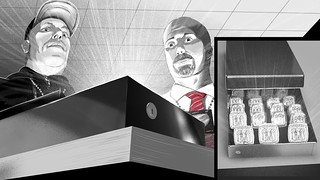 Murphy finds plenty before he even gets to the 6-foot, solid steel safe: boxes filled with 5-pound bags of beaded gold and silver sitting on tables; sets of plastic trays with tiny drawers, the kind you might use to hold loose screws or bolts on your workbench, only holding gold in different karats; stacks of gold plates on the wall, "about 30 or 40 pounds," Murphy says. He swishes all of it into his barrel.
Murphy finds plenty before he even gets to the 6-foot, solid steel safe: boxes filled with 5-pound bags of beaded gold and silver sitting on tables; sets of plastic trays with tiny drawers, the kind you might use to hold loose screws or bolts on your workbench, only holding gold in different karats; stacks of gold plates on the wall, "about 30 or 40 pounds," Murphy says. He swishes all of it into his barrel.
The robbers move room to room, carefully emptying E.A. Dion's stock. Antique coins. Wedding bands. Necklaces and bracelets. Estimated value for all they take is more than $2 million.
Morgan emerges from an office with bright eyes. "The Super Bowl rings are here!" he says. Murphy is stunned. "What do you mean?"
They aren't locked up, aren't even in a drawer, Morgan says. There are more than 50 of them. Morgan holds one out. "Look, it weighs about 20 pounds!"
To read the complete article, see:
THE GREAT SUPER BOWL RINGS HEIST
(https://www.espn.com/espn/feature/story/_/id/30777694/the-true-story-patriots-fan-stole-giants-super-bowl-rings)
The 25 Greatest Art Heists of All Time
Speaking of heists, here's an article enumerating the 25 greatest art thefts of all time. I correctly guessed #1, but must admit I was unaware of many others on the list.
So... what would comprise the list of the greatest numismatic thefts of all time? -Editor
 The following list surveys the 25 greatest art heists of all time. They have concerned artworks from throughout art history, from centuries-old archaeological objects to contemporary masterworks, and they have involved a range of shadowy figures, from amateurs to security experts to possibly even organized crime syndicates. In some cases, the works have been recovered, while other heists have ended with the works being lost permanently.
The following list surveys the 25 greatest art heists of all time. They have concerned artworks from throughout art history, from centuries-old archaeological objects to contemporary masterworks, and they have involved a range of shadowy figures, from amateurs to security experts to possibly even organized crime syndicates. In some cases, the works have been recovered, while other heists have ended with the works being lost permanently.
For the sake of this list, heists were defined as concerning public institutions and private collections.
To read the complete article, see:
The 25 Greatest Art Heists of All Time
(https://www.artnews.com/list/art-news/artists/greatest-art-heists-of-all-time-1234583441/isabella-stewart-gardner-museum-theft/)
3 Million Dollars Behind Glass
From 2018. Found on Quora. -Editor
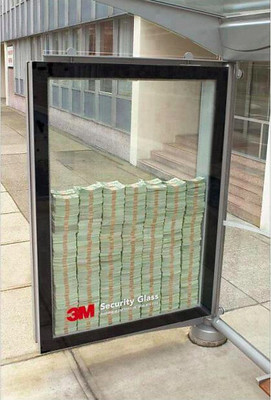 What are some examples of great marketing?
What are some examples of great marketing?
It would have to be 3M's Security Glass.
In 2005, the manufacturing company set up a promotional stunt at a Vancouver bus stop.
They were so confident about the strength of its bulletproof glass that they put 3 million dollars inside it.
If anyone can break the case open the money is theirs for the taking.
Passers-by were allowed to do some crazy things to the glass, such as getting a running start to kick the case and even taking a sledgehammer to it.
The advertising campaign went viral.
While being effective, it was also one of the cheapest campaigns — nobody was able to break the glass.
To read the complete article, see:
What are some examples of great marketing?
(https://www.quora.com/What-are-some-examples-of-great-marketing)
Congressional Gold Medal For Officer Goodman
The Senate ended Friday's impeachment trial proceedings with a unanimous vote to award the Congressional Gold Medal, one of the nation's highest civilian honors, to U.S. Capitol Police Officer Eugene Goodman, who directed the violent mob away from the Senate chamber on Jan. 6.
Goodman received a standing ovation from the senators, whom he saved from danger on Jan. 6. Goodman joined in the applause when Schumer mentioned the heroism of other law enforcement officers that day.
During the trial, the House impeachment managers showed previously unseen security footage of Sen. Mitt Romney (R-Utah) unknowingly heading in the direction of the mob when Goodman tells him to run the other way.
To read the complete article, see:
Senate votes to award Officer Eugene Goodman the Congressional Gold Medal
(https://www.washingtonpost.com/politics/capitol-riot-goodman-impeachment/2021/02/12/ae9f074e-6d89-11eb-9f80-3d7646ce1bc0_story.html)
The Fifteen Most Expensive Books
Think plated Chapman catalogs are expensive? Check out this list of the fifteen most expensive books and manuscripts ever sold. -Editor
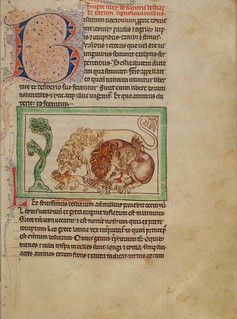 The Northumberland Bestiary is at once one of the most celebrated and most mysterious texts on our list. Most likely made in the 13th century in an English scriptorium, this Gothic-era book is a fantastical, fairytale-like compendium of descriptions and discussions of both real and mythical beasts accompanied by more than one hundred breathtaking medieval drawings. Who made the book is unknown, as is the sales price: following its first appearance at a Sotheby's auction in 1990, the Northumberland Bestiary was later purchased by the J. Paul Getty Museum in 2007 for an undisclosed amount (although most estimates suggest it was around $20 million).
The Northumberland Bestiary is at once one of the most celebrated and most mysterious texts on our list. Most likely made in the 13th century in an English scriptorium, this Gothic-era book is a fantastical, fairytale-like compendium of descriptions and discussions of both real and mythical beasts accompanied by more than one hundred breathtaking medieval drawings. Who made the book is unknown, as is the sales price: following its first appearance at a Sotheby's auction in 1990, the Northumberland Bestiary was later purchased by the J. Paul Getty Museum in 2007 for an undisclosed amount (although most estimates suggest it was around $20 million).
To read the complete article, see:
The Fifteen Most Expensive Books & Manuscripts Ever Sold
(https://www.invaluable.com/blog/most-expensive-books/)
Cash in the Kitty
Ron Haller-Williams passed along this older story about a cat that swallowed a coin. Thanks. From the site of The People's Dispensary for Sick Animals, the organization responsible for the Dickin medals for animal bravery. -Editor
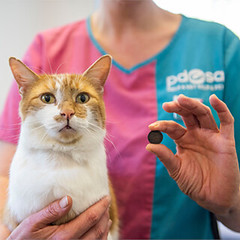 A ginger cat has been saved by our vets after swallowing a 5p coin which left the poor puss with suspected metal poisoning.
A ginger cat has been saved by our vets after swallowing a 5p coin which left the poor puss with suspected metal poisoning.
Steve and Frances Gwillm, from Ystradgynlais, near Swansea, initially put their cat Kevin's symptoms down to a bug, but after several days of being increasingly distant, weak and off his food they became concerned.
The family took the two-year-old pet to our Swansea Pet Hospital where our vets discovered the cause of his woes - a coin from their daughter's piggy bank.
To read the complete article, see:
Cash in the kitty
(https://www.pdsa.org.uk/press-office/real-life-stories/cash-in-the-kitty)
FEATURED WEB SITE: IRISH GUNMONEY
This week's Featured Web Site is Marcel Springorum's Irish Gunmoney site.
Irish gunmoney is a base metal token coinage used by James II in the war for Ireland against William of Orange in 1689 – 1690. This site will also discuss the closely related Limerick Emergency coinage.



